
Home » Blog » Bluewater sailboats » The best bluewater sailboats under 40 feet (we analyzed 2,000 boats to find out)

The best bluewater sailboats under 40 feet (we analyzed 2,000 boats to find out)
By Author Fiona McGlynn
Posted on Last updated: August 17, 2023
What are the best bluewater sailboats under 40 feet?
Last year we analyzed 2,000 offshore designs to bring you a list of the most popular bluewater sailboats .
However, most people are searching for a boat in a particular size class. So, we decided to do a double-click and look at the best sailboats under 40 feet for offshore sailing.
If you’re interested in an even smaller boat, there are plenty of great options under 30 feet in our list of the best small sailboats for sailing around the world .
The characteristics that make a sailboat a bluewater sailboat are a hotly debated topic, so we wanted to use real-world data and find out what cruisers are using to cross oceans and sail around the world.
We looked at 2,000 boats that entered the Pacific Puddle Jump (PPJ) over the last 12 years. For those of you who aren’t familiar with the PPJ, it’s a rally that crosses the Pacific ocean. We took part in 2017 and had a ball!
Also, if you’re looking to buy one of the bluewater boats on this list, you might want to check out our post on the best places to buy used boats and how to find free or cheap boats for sale .
Just be aware that a bluewater boat isn’t necessarily offshore-ready. Our top five picks are all older boats and will undoubtedly require work.
Every cruiser we know made substantial repairs and additions before going offshore: adding watermakers , life rafts, solar panels, and more.
Also, always have a boat inspected by a professional and accredited marine surveyor before buying it or taking it offshore.
So, without further preamble, here are the best bluewater sailboats under 40 feet.
The best bluewater sailboats under 40 feet
1. the westsail 32.
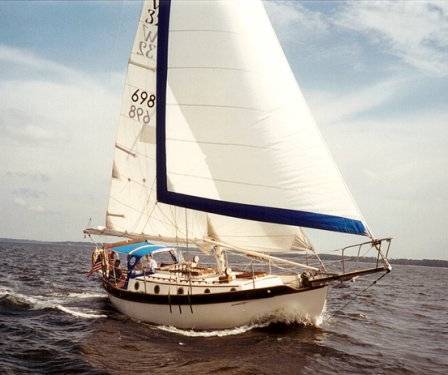
The Westsail 32 is one of the most iconic bluewater cruisers. Built by the Westsail Corporation in the 1970s, this plucky, small sailboat has developed a cult following over the decades. Since 2009, 19 have set out to cross the Pacific in the PPJ rallies.
The Westsail 32 is known for its sturdy construction, seaworthiness, and classic looks. In fact, it set the standard for what a real bluewater cruiser should look like. In 1973, the Westsail 32 was featured in Time magazine and inspired many Americans to go cruising.
Though popular, this boat has earned the unenviable nickname “ Wetsnail 32″, a reference to its poor ability to windward and sluggish performance. But Westsail 32 owners don’t care that they won’t be winning any races.
What the boat lacks in speed it makes up for in classic looks and excellent offshore cruising characteristics. Many owners have crossed oceans and circumnavigated the globe in their Westsail 32s.
2. Tayana 37
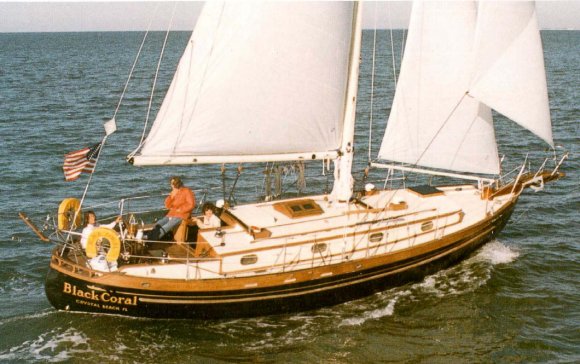
The Tayana 37 is a wildly popular Bob Perry design. It first rolled off the production line in 1976 and there are now several hundred of them sailing the world’s oceans.
Above the waterline, the Tayana 37 boasts beautiful traditional lines. However, Perry wanted to avoid the unenviable (read: sluggish) performance characteristics, associated with double-enders.
So, he designed the Tayana 37 with a cut-away long keel and moderate displacement, maintaining the classic look, while achieving reasonable performance.
The Tayana 37 has a devoted following of offshore enthusiasts. Since 2009, 12 Tayana 37s have set out to cross the Pacific in the PPJ rallies.
Read more about the Tayana 37 in this Practical Sailor review .
3. Hans Christian 38T
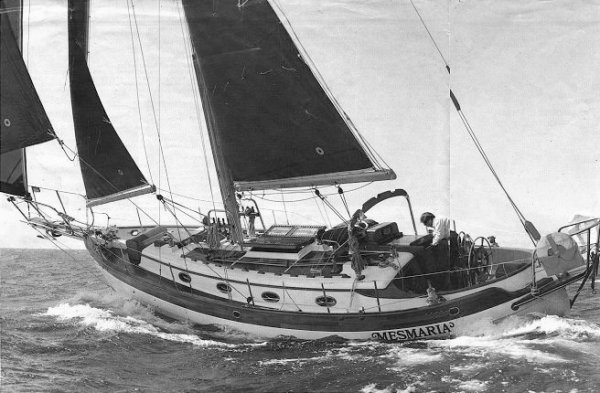
The Hans Christian 38T is a full-keeled, heavy displacement bluewater boat with a long bowsprit and a clipper bow, giving it a distinctive appearance. It was first introduced in 1976 and was produced until the early 1990s.
If you hadn’t already guessed, the “T” in the name stands for “Traditional”. Like many boats on this list, it takes a cue from Crealock’s famous Westsail 32 which sparked a craze in the 1970s and 80s for Scandinavian-style doubled-enders.
It’s gained a reputation as a capable and seaworthy cruising yacht. Many owners have crossed oceans and completed circumnavigations in Hans Christian 38Ts.
By our count, eight Hans Christian 38Ts have participated in Pacific Puddle Jump rallies over the last 12 years.
4. Island Packet 380
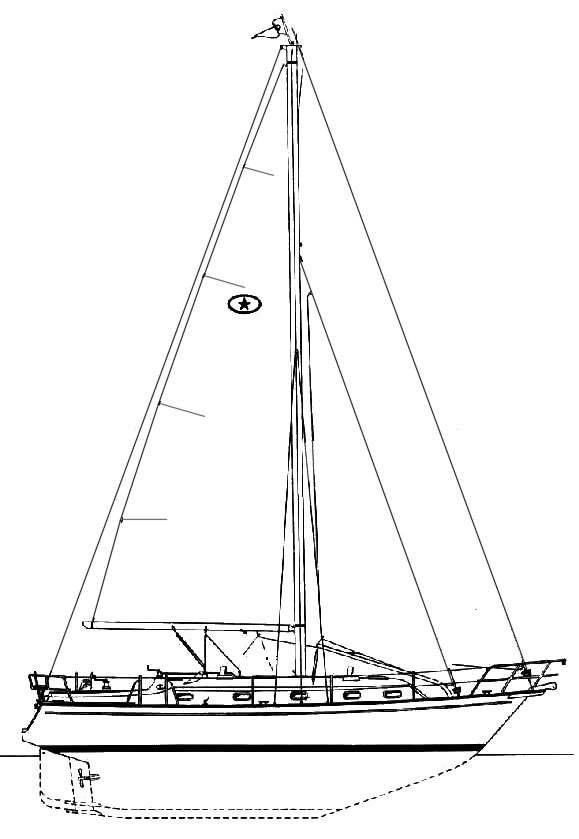
I’ve always considered Island Packets the Rolls-Royce of the bluewater boat world. Their distinctive cream-colored topsides make them easy to spot and their robust bluewater construction makes them the envy of many far-flung anchorages.
Designed by Bob Johnson and built by Island Packet Yachts in Florida, the Island Packet 380 was first introduced in 1998. 169 were built before 2004, over which time it gained a reputation as a capable and comfortable offshore cruiser.
Having been built in the ’90s and early 2000s, this is a relatively newer boat. In many ways, it offers the best of both worlds, a classic-looking boat with all the modern cruising conveniences.
The Island Packet 380 design prioritizes safety and stability. It also has several offshore features including standard twin bow rollers, a divided anchor locker, and ample storage for cruising gear.
Life below deck is comfortable too. With a 13-foot (4 meter) beam there’s plenty of room for liveaboard amenities.
The Island Packet 380 is a popular choice for long-distance cruising and offshore passages. Since 2009, six Island Packet 380s have set out to cross the Pacific in PPJ rallies.
Read more about the Island Packet 380 in this review by Yachting Monthly .
5. Ingrid 38
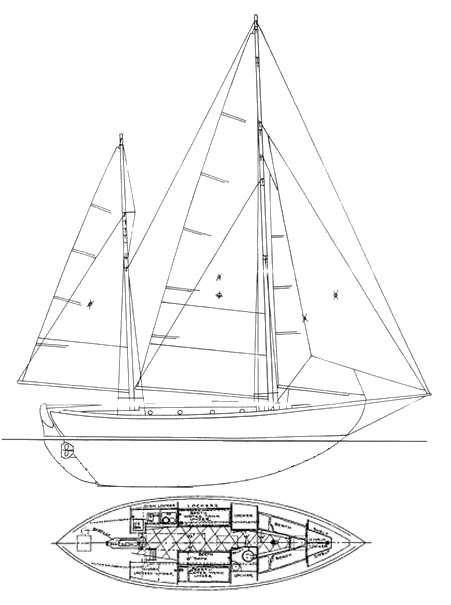
The Ingrid 38 is a double-ended sailboat that was originally designed for wood construction in 1938.
In 1971, Bluewater Boat Co. began building a fiberglass version. The design proved hugely popular and more than 140 were built.
With a full keep and heavy displacement, the Ingrid 38 epitomizes the traditional bluewater cruiser. Yet, it remains a well-loved design today. Since 2009, six Ingrid 38s have set out to cross the Pacific in PPJ rallies.
Description
Fiona McGlynn is an award-winning boating writer who created Waterborne as a place to learn about living aboard and traveling the world by sailboat. She has written for boating magazines including BoatUS, SAIL, Cruising World, and Good Old Boat. She’s also a contributing editor at Good Old Boat and BoatUS Magazine. In 2017, Fiona and her husband completed a 3-year, 13,000-mile voyage from Vancouver to Mexico to Australia on their 35-foot sailboat.
Terms and Conditions - Privacy Policy
- Yachting World
- Digital Edition

43 of the best bluewater sailboat designs of all time
- January 5, 2022
How do you choose the right yacht for you? We highlight the very best bluewater sailboat designs for every type of cruising

Which yacht is the best for bluewater boating? This question generates even more debate among sailors than questions about what’s the coolest yacht , or the best for racing. Whereas racing designs are measured against each other, cruising sailors get very limited opportunities to experience different yachts in real oceangoing conditions, so what is the best bluewater sailboat?
Here, we bring you our top choices from decades of designs and launches. Over the years, the Yachting World team has sailed these boats, tested them or judged them for European Yacht of the Year awards, and we have sifted through the many to curate a selection that we believe should be on your wishlist.
Making the right choice may come down to how you foresee your yacht being used after it has crossed an ocean or completed a passage: will you be living at anchor or cruising along the coast? If so, your guiding requirements will be space, cabin size, ease of launching a tender and anchoring closer to shore, and whether it can comfortably accommodate non-expert-sailor guests.
Article continues below…

The perfect boat: what makes an ideal offshore cruising yacht?
Choosing a boat for offshore cruising is not a decision to be taken lightly. I have researched this topic on…

European Yacht of the Year 2019: Best luxury cruisers
Before the sea trials began, I would have put money on a Hallberg-Rassy or the Wauquiez winning an award. The…
All of these considerations have generated the inexorable rise of the bluewater catamaran – monohulls can’t easily compete on these points. We have a full separate feature on the best bluewater multihulls of all time and here we mostly focus on monohulls. The only exceptions to that rule are two multihulls which made it into our best bluewater sailboats of 2022 list.
As so much of making the right choice is selecting the right boat for the venture in mind, we have separated out our edit into categories: best for comfort; for families; for performance; and for expedition or high latitudes sailing .
Best bluewater sailboats of 2022
The new flagship Allures 51.9, for example, is a no-nonsense adventure cruising design built and finished to a high standard. It retains Allures’ niche of using aluminium hulls with glassfibre decks and superstructures, which, the yard maintains, gives the optimum combination of least maintenance and less weight higher up. Priorities for this design were a full beam aft cabin and a spacious, long cockpit. Both are excellent, with the latter, at 6m long, offering formidable social, sailing and aft deck zones.
It likes some breeze to come to life on the wheel, but I appreciate that it’s designed to take up to five tonnes payload. And I like the ease with which you can change gears using the furling headsails and the positioning of the powerful Andersen winches inboard. The arch is standard and comes with a textile sprayhood or hard bimini.
Below decks you’ll find abundant headroom and natural light, a deep U-shape galley and cavernous stowage. For those who like the layout of the Amel 50 but would prefer aluminium or shoal draught, look no further.
Allures 51.9 price: €766,000
The Ovni 370 is another cunning new aluminum centreboard offering, a true deck saloon cruiser for two. The designers say the biggest challenge was to create a Category A ocean going yacht at this size with a lifting keel, hence the hull had to be very stable.
Enjoyable to helm, it has a practical, deep cockpit behind a large sprayhood, which can link to the bimini on the arch. Many of its most appealing features lie in the bright, light, contemporary, clever, voluminous interior, which has good stowage and tankage allocation. There’s also a practical navstation, a large workroom and a vast separate shower. I particularly like the convertible saloom, which can double as a large secure daybed or pilot berth.
Potentially the least expensive Category A lift keel boat available, the Ovni will get you dreaming of remote places again.
Ovni 370 price: €282,080

There’s no shortage of spirit in the Windelo 50. We gave this a sustainability award after it’s founders spent two years researching environmentally-friendly composite materials, developing an eco-composite of basalt fibre and recycled PET foam so it could build boats that halve the environmental impact of standard glassfibre yachts.
The Windelo 50 is an intriguing package – from the styling, modular interior and novel layout to the solar field on the roof and the standard electric propulsion, it is completely fresh.
Windelo 50 price: €795,000
Best bluewater sailboat of 2022 – Outremer 55
I would argue that this is the most successful new production yacht on the market. Well over 50 have already sold (an equipped model typically costs €1.6m) – and I can understand why. After all, were money no object, I had this design earmarked as the new yacht I would most likely choose for a world trip.
Indeed 55 number one Sanya, was fully equipped for a family’s world cruise, and left during our stay for the Grand Large Odyssey tour. Whereas we sailed Magic Kili, which was tricked up with performance options, including foam-cored deckheads and supports, carbon crossbeam and bulkheads, and synthetic rigging.
At rest, these are enticing space ships. Taking one out to sea is another matter though. These are speed machines with the size, scale and loads to be rightly weary of. Last month Nikki Henderson wrote a feature for us about how to manage a new breed of performance cruising cats just like this and how she coaches new owners. I could not think of wiser money spent for those who do not have ample multihull sailing experience.
Under sail, the most fun was obviously reserved for the reaching leg under asymmetric, where we clocked between 11-16 knots in 15-16 knots wind. But it was the stability and of those sustained low teen speeds which really hit home – passagemaking where you really cover miles.
Key features include the swing helms, which give you views from outboard, over the coachroof or from a protected position in the cockpit through the coachroof windows, and the vast island in the galley, which is key to an open plan main living area. It helps provide cavernous stowage and acts as the heart of the entertaining space as it would in a modern home. As Danish judge Morten Brandt-Rasmussen comments: “Apart from being the TGV of ocean passages the boat offers the most spacious, open and best integration of the cockpit and salon areas in the market.”
Outremer has done a top job in packing in the creature comforts, stowage space and payload capacity, while keeping it light enough to eat miles. Although a lot to absorb and handle, the 55 offers a formidable blend of speed and luxury cruising.
Outremer 55 price: €1.35m
Best bluewater sailboats for comfort
This is the successor to the legendary Super Maramu, a ketch design that for several decades defined easy downwind handling and fostered a cult following for the French yard. Nearly a decade old, the Amel 55 is the bridge between those world-girdling stalwarts and Amel’s more recent and totally re-imagined sloop designs, the Amel 50 and 60.
The 55 boasts all the serious features Amel aficionados loved and valued: a skeg-hung rudder, solidly built hull, watertight bulkheads, solid guardrails and rampart bulwarks. And, most noticeable, the solid doghouse in which the helmsman sits in perfect shelter at the wheel.
This is a design to live on comfortably for long periods and the list of standard features just goes on and on: passarelle; proper sea berths with lee cloths; electric furling main and genoa; and a multitude of practical items that go right down to a dishwasher and crockery.
There’s no getting around the fact these designs do look rather dated now, and through the development of easier sail handling systems the ketch rig has fallen out of fashion, but the Amel is nothing short of a phenomenon, and if you’ve never even peeked on board one, you really have missed a treat.

Photo: Sander van der Borch
Contest 50CS
A centre cockpit cruiser with true longevity, the Contest 50CS was launched by Conyplex back in 2003 and is still being built by the family-owned Dutch company, now in updated and restyled form.
With a fully balanced rudder, large wheel and modern underwater sections, the Contest 50CS is a surprisingly good performer for a boat that has a dry weight of 17.5 tonnes. Many were fitted with in-mast furling, which clearly curtails that performance, but even without, this boat is set up for a small crew.
Electric winches and mainsheet traveller are all easy to reach from the helm. On our test of the Contest 50CS, we saw for ourselves how two people can gybe downwind under spinnaker without undue drama. Upwind, a 105% genoa is so easy to tack it flatters even the weediest crewmember.
Down below, the finish level of the joinery work is up there among the best and the interior is full of clever touches, again updated and modernised since the early models. Never the cheapest bluewater sailing yacht around, the Contest 50CS has remained in demand as a brokerage buy. She is a reassuringly sure-footed, easily handled, very well built yacht that for all those reasons has stood the test of time.
This is a yacht that would be well capable of helping you extend your cruising grounds, almost without realising it.
Read more about the Contest 50CS and the new Contest 49CS

Photo: Rick Tomlinson
Hallberg-Rassy 48 Mk II
For many, the Swedish Hallberg-Rassy yard makes the quintessential bluewater cruiser for couples. With their distinctive blue cove line, these designs are famous for their seakindly behaviour, solid-as-a-rock build and beautifully finished, traditional interiors.
To some eyes, Hallberg-Rassys aren’t quite cool enough, but it’s been company owner Magnus Rassy’s confidence in the formula and belief in incremental ‘step-by-step’ evolution that has been such an exceptional guarantor of reliable quality, reputation and resale value.
The centre cockpit Hallberg-Rassy 48 epitomises the concept of comfort at sea and, like all the Frers-designed Hallberg-Rassys since the 1990s, is surprisingly fleet upwind as well as steady downwind. The 48 is perfectly able to be handled by a couple (as we found a few years back in the Pacific), and could with no great effort crack out 200-mile days.
The Hallberg-Rassy 48 was launched nearly a decade ago, but the Mk II from 2014 is our pick, updated with a more modern profile, larger windows and hull portlights that flood the saloon and aft cabin with light. With a large chart table, secure linear galley, heaps of stowage and space for bluewater extras such as machinery and gear, this yacht pretty much ticks all the boxes.

Discovery 55
First launched in 2000, the Discovery 55 has stood the test of time. Designed by Ron Holland, it hit a sweet spot in size that appealed to couples and families with world girdling plans.
Elegantly styled and well balanced, the 55 is also a practical design, with a deep and secure cockpit, comfortable seating, a self-tacking jib, dedicated stowage for the liferaft , a decent sugar scoop transom that’s useful for swimming or dinghy access, and very comfortable accommodation below. In short, it is a design that has been well thought out by those who’ve been there, got the bruises, stubbed their toes and vowed to change things in the future if they ever got the chance.
Throughout the accommodation there are plenty of examples of good detailing, from the proliferation of handholds and grabrails, to deep sinks in the galley offering immediate stowage when under way and the stand up/sit down showers. Stowage is good, too, with plenty of sensibly sized lockers in easily accessible positions.
The Discovery 55 has practical ideas and nifty details aplenty. She’s not, and never was, a breakthrough in modern luxury cruising but she is pretty, comfortable to sail and live on, and well mannered.

Photo: Latitudes Picture Library
You can’t get much more Cornish than a Rustler. The hulls of this Stephen Jones design are hand-moulded and fitted out in Falmouth – and few are more ruggedly built than this traditional, up-for-anything offshore cruiser.
She boasts an encapsulated lead keel, eliminating keel bolts and creating a sump for generous fuel and water tankage, while a chunky skeg protects the rudder. She is designed for good directional stability and load carrying ability. These are all features that lend this yacht confidence as it shoulders aside the rough stuff.
Most of those built have had a cutter rig, a flexible arrangement that makes sense for long passages in all sea and weather conditions. Down below, the galley and saloon berths are comfortable and sensible for living in port and at sea, with joinery that Rustler’s builders are rightly proud of.
As modern yachts have got wider, higher and fatter, the Rustler 42 is an exception. This is an exceptionally well-mannered seagoing yacht in the traditional vein, with elegant lines and pleasing overhangs, yet also surprisingly powerful. And although now over 20 years old, timeless looks and qualities mean this design makes her look ever more like a perennial, a modern classic.
The definitive crossover size, the point at which a yacht can be handled by a couple but is just large enough to have a professional skipper and be chartered, sits at around the 60ft mark. At 58ft 8in, the Oyster 575 fitted perfectly into this growing market when launched in 2010. It went on to be one of the most popular models from the yard, and is only now being superseded by the newer Rob Humphreys-designed Oyster 565 (just launched this spring).
Built in various configurations with either a deep keel, shoal draught keel or centreboard with twin rudders, owners could trade off better performance against easy access to shallower coves and anchorages. The deep-bodied hull, also by Rob Humphreys, is known for its easy motion at sea.
Some of the Oyster 575’s best features include its hallmark coachroof windows style and centre cockpit – almost everyone will know at first glance this is an Oyster – and superb interior finish. If she has a flaw, it is arguably the high cockpit, but the flip side is the galley headroom and passageway berth to the large aft stateroom.
This design also has a host of practical features for long-distance cruising, such as high guardrails, dedicated liferaft stowage, a vast lazarette for swallowing sails, tender, fenders etc, and a penthouse engine room.

Privilege Serie 5
A true luxury catamaran which, fully fitted out, will top €1m, this deserves to be seen alongside the likes of the Oyster 575, Gunfleet 58 and Hallberg-Rassy 55. It boasts a large cockpit and living area, and a light and spacious saloon with an emphasis on indoor-outdoor living, masses of refrigeration and a big galley.
Standout features are finish quality and solid build in a yacht designed to take a high payload, a secure walkaround deck and all-round views from the helm station. The new Privilege 510 that will replace this launches in February 2020.
Gunfleet 43
It was with this Tony Castro design that Richard Matthews, founder of Oyster Yachts, launched a brand new rival brand in 2012, the smallest of a range stretching to the flagship Gunfleet 74. The combination of short overhangs and centre cockpit at this size do make the Gunfleet 43 look modern if a little boxy, but time and subsequent design trends have been kind to her lines, and the build quality is excellent. The saloon, galley and aft cabin space is exceptional on a yacht of this size.

Photo: David Harding
Conceived as a belt-and-braces cruiser, the Kraken 50 launched last year. Its unique points lie underwater in the guise of a full skeg-hung rudder and so-called ‘Zero Keel’, an encapsulated long keel with lead ballast.
Kraken Yachts is the brainchild of British businessman and highly experienced cruiser Dick Beaumont, who is adamant that safety should be foremost in cruising yacht design and build. “There is no such thing as ‘one yacht for all purposes’… You cannot have the best of all worlds, whatever the salesman tells you,” he says.
Read our full review of the Kraken 50 .

Wauquiez Centurion 57
Few yachts can claim to be both an exciting Med-style design and a serious and practical northern European offshore cruiser, but the Wauquiez Centurion 57 tries to blend both. She slightly misses if you judge solely by either criterion, but is pretty and practical enough to suit her purpose.
A very pleasant, well-considered yacht, she is impressively built and finished with a warm and comfortable interior. More versatile than radical, she could be used for sailing across the Atlantic in comfort and raced with equal enjoyment at Antigua Sailing Week .

A modern classic if ever there was one. A medium to heavy displacement yacht, stiff and easily capable of standing up to her canvas. Pretty, traditional lines and layout below.

Photo: Voyage of Swell
Well-proven US legacy design dating back to the mid-1960s that once conquered the Transpac Race . Still admired as pretty, with slight spoon bow and overhanging transom.

Capable medium displacement cruiser, ideal size and good accommodation for couples or family cruising, and much less costly than similar luxury brands.

Photo: Peter Szamer
Swedish-built aft cockpit cruiser, smaller than many here, but a well-built and finished, super-durable pocket ocean cruiser.

Tartan 3700
Designed as a performance cruiser there are nimbler alternatives now, but this is still an extremely pretty yacht.
Broker ’ s choice

Discovery 55 Brizo
This yacht has already circumnavigated the globe and is ‘prepared for her next adventure,’ says broker Berthon. Price: £535,000 + VAT

Oyster 575 Ayesha
‘Stunning, and perfectly equipped for bluewater cruising,’ says broker Ancasta International. Price: £845,000 (tax not paid)

Oyster 575 Pearls of Nautilus
Nearly new and with a high spec, this Oyster Brokerage yacht features American white oak joinery and white leather upholstery and has a shoal draught keel. Price: $1.49m
Best bluewater yachts for performance
The Frers-designed Swan 54 may not be the newest hull shape but heralded Swan’s latest generation of displacement bluewater cruisers when launched four years ago. With raked stem, deep V hull form, lower freeboard and slight curve to the topsides she has a more timeless aesthetic than many modern slab-sided high volume yachts, and with that a seakindly motion in waves. If you plan to cover many miles to weather, this is probably the yacht you want to be on.

Photo: Carlo Borlenghi
Besides Swan’s superlative build quality, the 54 brings many true bluewater features, including a dedicated sail locker. There’s also a cockpit locker that functions as a utility cabin, with potential to hold your generator and washing machine, or be a workshop space.
The sloping transom opens out to reveal a 2.5m bathing platform, and although the cabins are not huge there is copious stowage space. Down below the top-notch oak joinery is well thought through with deep fiddles, and there is a substantial nav station. But the Swan 54 wins for handling above all, with well laid-out sail controls that can be easily managed between a couple, while offering real sailing enjoyment to the helmsman.

Photo: Graham Snook
The Performance Cruiser winner at the 2019 European Yacht of the Year awards, the Arcona 435 is all about the sailing experience. She has genuine potential as a cruiser-racer, but her strengths are as an enjoyable cruiser rather than a full-blown liveaboard bluewater boat.
Build quality is excellent, there is the option of a carbon hull and deck, and elegant lines and a plumb bow give the Arcona 435 good looks as well as excellent performance in light airs. Besides slick sail handling systems, there are well thought-out features for cruising, such as ample built-in rope bins and an optional semi-closed stern with stowage and swim platform.

Outremer 51
If you want the space and stability of a cat but still prioritise sailing performance, Outremer has built a reputation on building catamarans with true bluewater characteristics that have cruised the planet for the past 30 years.
Lighter and slimmer-hulled than most cruising cats, the Outremer 51 is all about sailing at faster speeds, more easily. The lower volume hulls and higher bridgedeck make for a better motion in waves, while owners report that being able to maintain a decent pace even under reduced canvas makes for stress-free passages. Deep daggerboards also give good upwind performance.
With bucket seats and tiller steering options, the Outremer 51 rewards sailors who want to spend time steering, while they’re famously well set up for handling with one person on deck. The compromise comes with the interior space – even with a relatively minimalist style, there is less cabin space and stowage volume than on the bulkier cats, but the Outremer 51 still packs in plenty of practical features.

The Xc45 was the first cruising yacht X-Yachts ever built, and designed to give the same X-Yachts sailing experience for sailors who’d spent years racing 30/40-footer X- and IMX designs, but in a cruising package.
Launched over 10 years ago, the Xc45 has been revisited a few times to increase the stowage and modernise some of the styling, but the key features remain the same, including substantial tanks set low for a low centre of gravity, and X-Yachts’ trademark steel keel grid structure. She has fairly traditional styling and layout, matched with solid build quality.
A soft bilge and V-shaped hull gives a kindly motion in waves, and the cockpit is secure, if narrow by modern standards.

A three or four cabin catamaran that’s fleet of foot with high bridgedeck clearance for comfortable motion at sea. With tall daggerboards and carbon construction in some high load areas, Catana cats are light and quick to accelerate.

Sweden Yachts 45
An established bluewater design that also features in plenty of offshore races. Some examples are specced with carbon rig and retractable bowsprits. All have a self-tacking jib for ease. Expect sweeping areas of teak above decks and a traditionally wooded interior with hanging wet locker.

A vintage performer, first launched in 1981, the 51 was the first Frers-designed Swan and marked a new era of iconic cruiser-racers. Some 36 of the Swan 51 were built, many still actively racing and cruising nearly 40 years on. Classic lines and a split cockpit make this a boat for helming, not sunbathing.

Photo: Julien Girardot / EYOTY
The JPK 45 comes from a French racing stable, combining race-winning design heritage with cruising amenities. What you see is what you get – there are no superfluous headliners or floorboards, but there are plenty of ocean sailing details, like inboard winches for safe trimming. The JPK 45 also has a brilliantly designed cockpit with an optional doghouse creating all-weather shelter, twin wheels and superb clutch and rope bin arrangement.

Photo: Andreas Lindlahr
For sailors who don’t mind exchanging a few creature comforts for downwind planing performance, the Pogo 50 offers double-digit surfing speeds for exhilarating tradewind sailing. There’s an open transom, tiller steering and no backstay or runners. The Pogo 50 also has a swing keel, to nose into shallow anchorages.

Seawind 1600
Seawinds are relatively unknown in Europe, but these bluewater cats are very popular in Australia. As would be expected from a Reichel-Pugh design, this 52-footer combines striking good looks and high performance, with fine entry bows and comparatively low freeboard. Rudders are foam cored lifting designs in cassettes, which offer straightforward access in case of repairs, while daggerboards are housed under the deck.
Best bluewater sailboats for families
It’s unsurprising that, for many families, it’s a catamaran that meets their requirements best of increased space – both living space and separate cabins for privacy-seeking teenagers, additional crew or visiting family – as well as stable and predictable handling.

Photo: Nicholas Claris
Undoubtedly one of the biggest success stories has been the Lagoon 450, which, together with boats like the Fountaine Pajot 44, helped drive up the popularity of catamaran cruising by making it affordable and accessible. They have sold in huge numbers – over 1,000 Lagoon 450s have been built since its launch in 2010.
The VPLP-designed 450 was originally launched with a flybridge with a near central helming position and upper level lounging areas (450F). The later ‘sport top’ option (450S) offered a starboard helm station and lower boom (and hence lower centre of gravity for reduced pitching). The 450S also gained a hull chine to create additional volume above the waterline. The Lagoon features forward lounging and aft cockpit areas for additional outdoor living space.
Besides being a big hit among charter operators, Lagoons have proven themselves over thousands of bluewater miles – there were seven Lagoon 450s in last year’s ARC alone. In what remains a competitive sector of the market, Lagoon has recently launched a new 46, with a larger self-tacking jib and mast moved aft, and more lounging areas.

Photo: Gilles Martin-Raget
Fountaine Pajot Helia 44
The FP Helia 44 is lighter, lower volume, and has a lower freeboard than the Lagoon, weighing in at 10.8 tonnes unloaded (compared to 15 for the 450). The helm station is on a mezzanine level two steps up from the bridgedeck, with a bench seat behind. A later ‘Evolution’ version was designed for liveaboard cruisers, featuring beefed up dinghy davits and an improved saloon space.
Available in three or four cabin layouts, the Helia 44 was also popular with charter owners as well as families. The new 45 promises additional volume, and an optional hydraulically lowered ‘beach club’ swim platform.

Photo: Arnaud De Buyzer / graphikup.com
The French RM 1370 might be less well known than the big brand names, but offers something a little bit different for anyone who wants a relatively voluminous cruising yacht. Designed by Marc Lombard, and beautifully built from plywood/epoxy, the RM is stiff and responsive, and sails superbly.
The RM yachts have a more individual look – in part down to the painted finish, which encourages many owners to personalise their yachts, but also thanks to their distinctive lines with reverse sheer and dreadnought bow. The cockpit is well laid out with the primary winches inboard for a secure trimming position. The interior is light, airy and modern, although the open transom won’t appeal to everyone.
For those wanting a monohull, the Hanse 575 hits a similar sweet spot to the popular multis, maximising accommodation for a realistic price, yet with responsive performance.
The Hanse offers a vast amount of living space thanks to the ‘loft design’ concept of having all the living areas on a single level, which gives a real feeling of spaciousness with no raised saloon or steps to accommodation. The trade-off for such lofty head height is a substantial freeboard – it towers above the pontoon, while, below, a stepladder is provided to reach some hatches.
Galley options include drawer fridge-freezers, microwave and coffee machine, and the full size nav station can double up as an office or study space.
But while the Hanse 575 is a seriously large boat, its popularity is also down to the fact that it is genuinely able to be handled by a couple. It was innovative in its deck layout: with a self-tacking jib and mainsheet winches immediately to hand next to the helm, one person could both steer and trim.
Direct steering gives a feeling of control and some tangible sailing fun, while the waterline length makes for rapid passage times. In 2016 the German yard launched the newer Hanse 588 model, having already sold 175 of the 575s in just four years.

Photo: Bertel Kolthof
Jeanneau 54
Jeanneau leads the way among production builders for versatile all-rounder yachts that balance sail performance and handling, ergonomics, liveaboard functionality and good looks. The Jeanneau 54 , part of the range designed by Philippe Briand with interior by Andrew Winch, melds the best of the larger and smaller models and is available in a vast array of layout options from two cabins/two heads right up to five cabins and three heads.
We’ve tested the Jeanneau 54 in a gale and very light winds, and it acquitted itself handsomely in both extremes. The primary and mainsheet winches are to hand next to the wheel, and the cockpit is spacious, protected and child-friendly. An electric folding swim and sun deck makes for quick fun in the water.

Nautitech Open 46
This was the first Nautitech catamaran to be built under the ownership of Bavaria, designed with an open-plan bridgedeck and cockpit for free-flowing living space. But with good pace for eating up bluewater miles, and aft twin helms rather than a flybridge, the Nautitech Open 46 also appeals to monohull sailors who prefer a more direct sailing experience.

Made by Robertson and Caine, who produce catamarans under a dual identity as both Leopard and the Sunsail/Moorings charter cats, the Leopard 45 is set to be another big seller. Reflecting its charter DNA, the Leopard 45 is voluminous, with stepped hulls for reduced waterline, and a separate forward cockpit.
Built in South Africa, they are robustly tested off the Cape and constructed ruggedly enough to handle heavy weather sailing as well as the demands of chartering.

Photo: Olivier Blanchet
If space is king then three hulls might be even better than two. The Neel 51 is rare as a cruising trimaran with enough space for proper liveaboard sailing. The galley and saloon are in the large central hull, together with an owner’s cabin on one level for a unique sensation of living above the water. Guest or family cabins lie in the outer hulls for privacy and there is a cavernous full height engine room under the cabin sole.
Performance is notably higher than an equivalent cruising cat, particularly in light winds, with a single rudder giving a truly direct feel in the helm, although manoeuvring a 50ft trimaran may daunt many sailors.

Beneteau Oceanis 46.1
A brilliant new model from Beneteau, this Finot Conq design has a modern stepped hull, which offers exhilarating and confidence-inspiring handling in big breezes, and slippery performance in lighter winds.
The Beneteau Oceanis 46.1 was the standout performer at this year’s European Yacht of the Year awards, and, in replacing the popular Oceanis 45, looks set to be another bestseller. Interior space is well used with a double island berth in the forepeak. An additional inboard unit creates a secure galley area, but tank capacity is moderate for long periods aboard.

Beneteau Oceanis 473
A popular model that offers beam and height in a functional layout, although, as with many boats of this age (she was launched in 2002), the mainsheet is not within reach of the helmsman.

Jeanneau Sun Odyssey 49
The Philippe Briand-designed Sun Odyssey range has a solid reputation as family production cruisers. Like the 473, the Sun Odyssey 49 was popular for charter so there are plenty of four-cabin models on the market.

Nautitech 441
The hull design dates back to 1995, but was relaunched in 2012. Though the saloon interior has dated, the 441 has solid practical features, such as a rainwater run-off collection gutter around the coachroof.

Atlantic 42
Chris White-designed cats feature a pilothouse and forward waist-high working cockpit with helm position, as well as an inside wheel at the nav station. The Atlantic 42 offers limited accommodation by modern cat standards but a very different sailing experience.
Best bluewater sailing yachts for expeditions
Bestevaer 56.
All of the yachts in our ‘expedition’ category are aluminium-hulled designs suitable for high latitude sailing, and all are exceptional yachts. But the Bestevaer 56 is a spectacular amount of boat to take on a true adventure. Each Bestevaer is a near-custom build with plenty of bespoke options for owners to customise the layout and where they fall on the scale of rugged off-grid adventurer to 4×4-style luxury fit out.

The Bestevaer range began when renowned naval architect Gerard Dijkstra chose to design his own personal yacht for liveaboard adventure cruising, a 53-footer. The concept drew plenty of interest from bluewater sailors wanting to make longer expeditions and Bestevaers are now available in a range of sizes, with the 56-footer proving a popular mid-range length.
The well-known Bestevaer 56 Tranquilo (pictured above) has a deep, secure cockpit, voluminous tanks (700lt water and over 1,100lt fuel) and a lifting keel plus water ballast, with classically styled teak clad decks and pilot house. Other owners have opted for functional bare aluminium hull and deck, some choose a doghouse and others a pilothouse.

Photo: Jean-Marie Liot
The Boreal 52 also offers Land Rover-esque practicality, with utilitarian bare aluminium hulls and a distinctive double-level doghouse/coachroof arrangement for added protection in all weathers. The cockpit is clean and uncluttered, thanks to the mainsheet position on top of the doghouse, although for visibility in close manoeuvring the helmsman will want to step up onto the aft deck.
Twin daggerboards, a lifting centreboard and long skeg on which she can settle make this a true go-anywhere expedition yacht. The metres of chain required for adventurous anchoring is stowed in a special locker by the mast to keep the weight central. Down below has been thought through with equally practical touches, including plenty of bracing points and lighting that switches on to red light first to protect your night vision.

Photo: Morris Adant / Garcia Yachts
Garcia Exploration 45
The Garcia Exploration 45 comes with real experience behind her – she was created in association with Jimmy Cornell, based on his many hundreds of thousands of miles of bluewater cruising, to go anywhere from high latitudes to the tropics.
Arguably less of a looker than the Bestevaer, the Garcia Exploration 45 features a rounded aluminium hull, centreboard with deep skeg and twin daggerboards. The considerable anchor chain weight has again been brought aft, this time via a special conduit to a watertight locker in front of the centreboard.
This is a yacht designed to be lived on for extended periods with ample storage, and panoramic portlights to give a near 360° view of whichever extraordinary landscape you are exploring. Safety features include a watertight companionway door to keep extreme weather out and through-hull fittings placed above the waterline. When former Vendée Globe skipper Pete Goss went cruising , this was the boat he chose to do it in.

Photo: svnaima.com
A truly well-proven expedition design, some 1,500 Ovnis have been built and many sailed to some of the most far-flung corners of the world. (Jimmy Cornell sailed his Aventura some 30,000 miles, including two Drake Passage crossings, one in 50 knots of wind).

Futuna Exploration 54
Another aluminium design with a swinging centreboard and a solid enclosed pilothouse with protected cockpit area. There’s a chunky bowsprit and substantial transom arch to house all manner of electronics and power generation.
Previous boats have been spec’d for North West Passage crossings with additional heating and engine power, although there’s a carbon rig option for those that want a touch of the black stuff. The tanks are capacious, with 1,000lt capability for both fresh water and fuel.
If you enjoyed this….
Yachting World is the world’s leading magazine for bluewater cruisers and offshore sailors. Every month we have inspirational adventures and practical features to help you realise your sailing dreams. Build your knowledge with a subscription delivered to your door. See our latest offers and save at least 30% off the cover price.
- BOAT OF THE YEAR
- Newsletters
- Sailboat Reviews
- Boating Safety
- Sailing Totem
- Charter Resources
- Destinations
- Galley Recipes
- Living Aboard
- Sails and Rigging
- Maintenance
- Best Marine Electronics & Technology

11 Best Pocket Cruiser Sailboats to Fit a Budget
- By Cruising World Staff
- Updated: August 9, 2021
Looking for a trailerable pocket cruiser that offers that liveaboard feeling? This list features 11 small sailboats with cabins that have the amenities often found on larger vessels. They may not be ocean crossing vessels, but they’re certainly capable of handling big bays and open waters.
What is a pocket cruiser? It’s a small trailerable sailboat, typically under 30 feet in length, that’s ideal for cruising big lakes, bays, coastal ocean waters, and occasionally bluewater cruising. Pocket cruisers are usually more affordable, compact, and offer a level of comfort that’s comparable to bigger liveaboards.
Small cruising sailboats are appealing for many reasons, but if you’re like most of us, you want to maintain a certain level of comfort while on the water. We took a poll and these are what we found to be the best cruising sailboats under 30 feet.
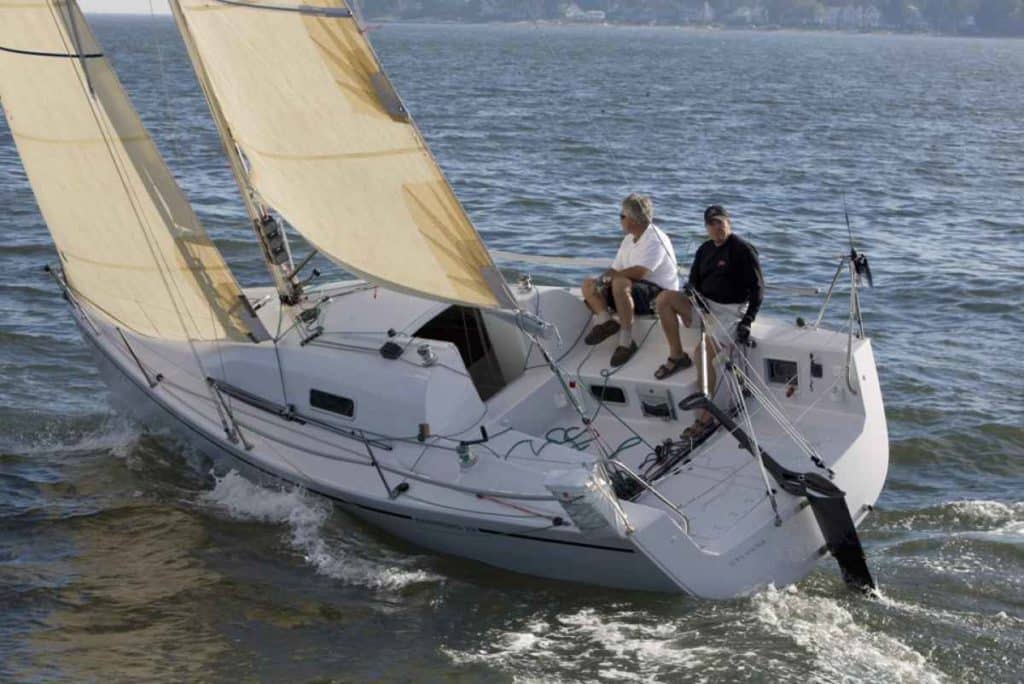
Open and airy below deck, the Andrews 28 doesn’t sacrifice comfort for speed. Designed by Alan Andrews, the Southern California naval architect renowned for his light, fast raceboats, this 28-footer will certainly appeal to the cruiser who also enjoys a little club racing. Sporting a total of 6 berths, a galley, head and nav area, you might forget you are on a boat small enough to be easily trailered. The retractable keel allows the Andrews 28 to be easily launched and hauled and ensures it’s as comfortable as a daysailer as it is a racer. Click here to read more about the Andrews28.
Beneteau First 20
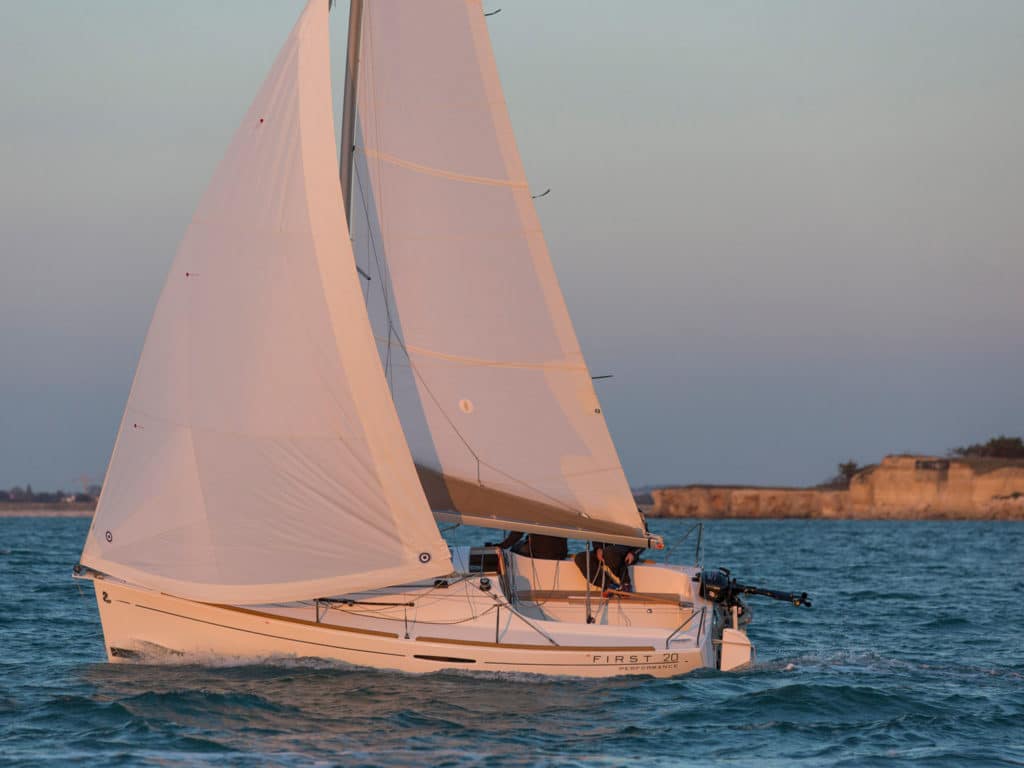
Small sailboat with a cabin? Check! Fun to sail? Modern design? Capable of flying a spinnaker? Check! Check! Check! The Finot-Conq-designed Beneteau First 20, which replaced the popular Beneteau first 211 nearly a decade ago now, is a sporty-but-stable pocket cruiser suitable for newcomers to the sport who are eager to learn their chops before moving up to a bigger boat or for old salts looking to downsize to a trailerable design. The boat features twin rudders, a lifting keel, and a surprisingly roomy interior with bunks for four. Click here to read more about the Beneteau First 20 .
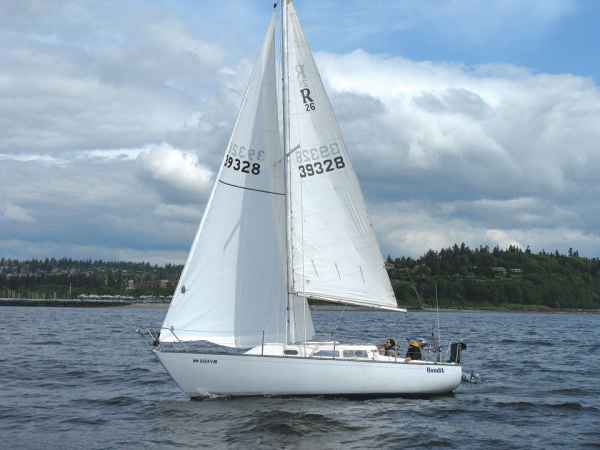
Conceived as a way to bridge the gap between a safe, comfortable, family cruiser and a competitive racer, Gary Mull’s Ranger 26 does exactly as it was designed to. Undeniably fast, (one won the 1970 IOR North American Half-Ton Cup) the boat sails as well as it looks. However speed isn’t the Ranger’s only strong-suit, with over 7 feet of cockpit there’s plenty of room for socializing after an evening of racing. The Ranger 26 sports a nice balance of freeboard and cabin height ensuring that a handsome profile wasn’t sacrificed for standing headroom. Click here to read more about the Ranger 26.
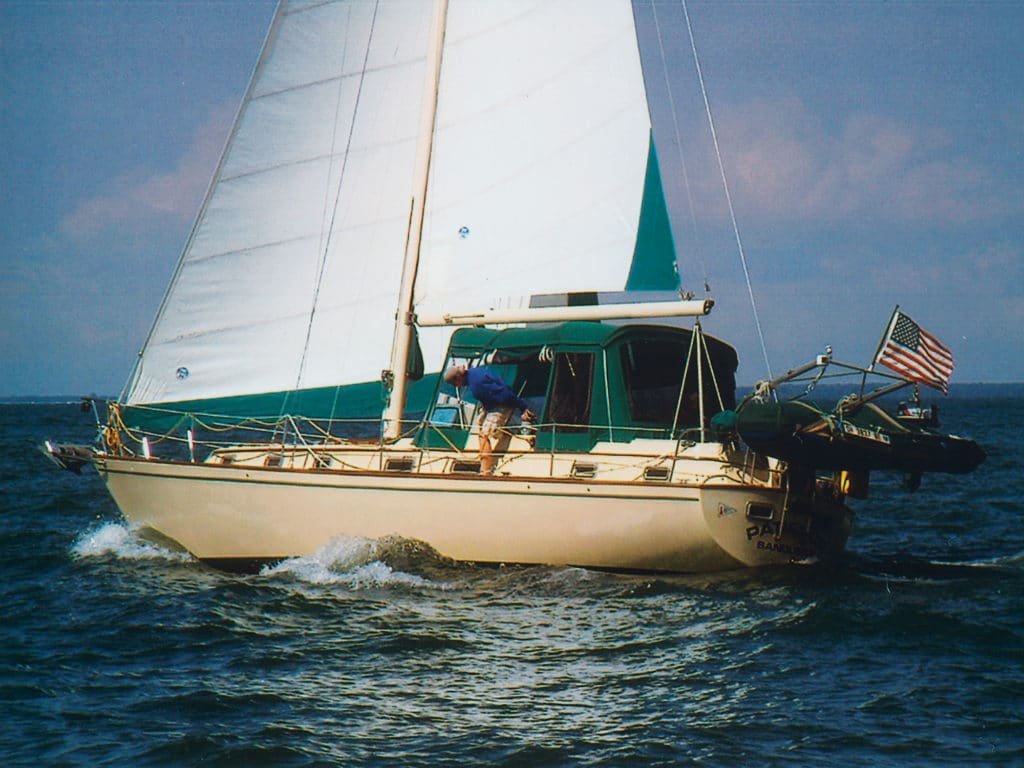
Catboats were once a common site in coastal waters, where they sailed the shallow bays as fishing or work boats. Their large single and often gaff-rigged sail provided plenty of power, and a centerboard made them well-suited for the thin waters they frequently encountered. In the late 1970s, Canadian builder Hinterhoeller introduced the Nonsuch 30, a fiberglass variation of the catboat design, with a modern Marconi sail flown on a stayless mast, and a keel instead of a centerboard. The boat’s wide beam made room below for a spacious interior, and the design caught on quickly with cruising sailors looking for a small bluewater sailboat. Click here to read more about the Nonsuch 30 .
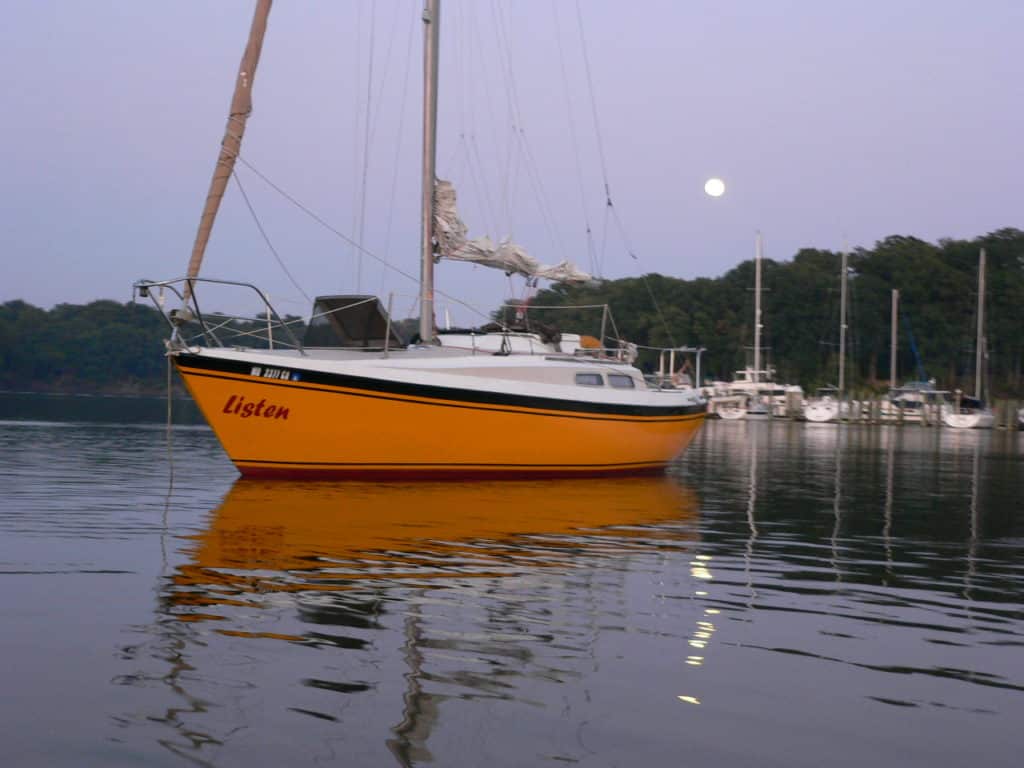
Debuted in 1971 in California, the Newport 27 was an instant success on the local racing scene. For a modest 27-footer, the Newport 27 has an unusually spacious interrior with over 6 feet of standing headroom. With 4 berths, a table, nav station, head and galley the Newport 27 has all the amenities you might find in a much bigger boat, all in a compact package. While quick in light air, the drawback of the tiller steering becomes apparent with increasing breeze and weather helm often leading to shortening sail early. Click here to read more about the Newport 27.
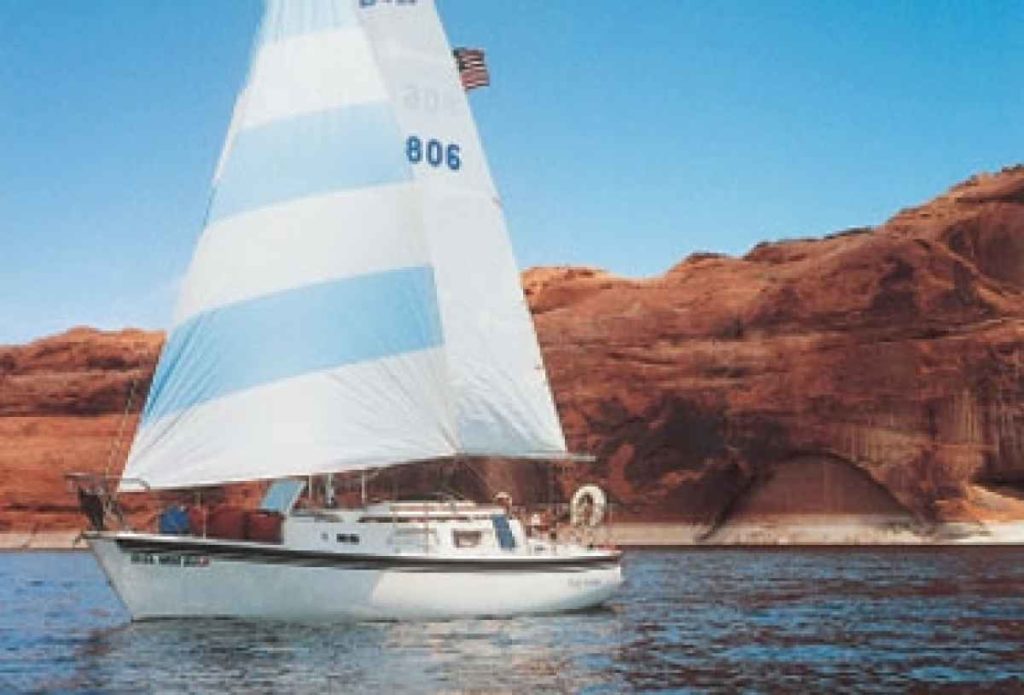
First splashed in 1969, the Balboa 26 continues to enjoy a strong following among budget-minded cruisers. Built sturdy and heavy, all of the boat’s stress points are reinforced. The spacious cockpit comfortably seats 4 and is self bailing, ensuring that sailors stay dry. While only 26 feet, the Balboa still has room for a double berth, galley with stove and freshwater pump, and an optional marine head or V-berth. The Balboa has the ability to sleep five, though the most comfortable number is two or three. Under sail, the Balboa is fast and maneuverable, but may prove a handful in heavy breeze as weather helm increases. Click here to read more about the Balboa 26.
Cape Dory 28
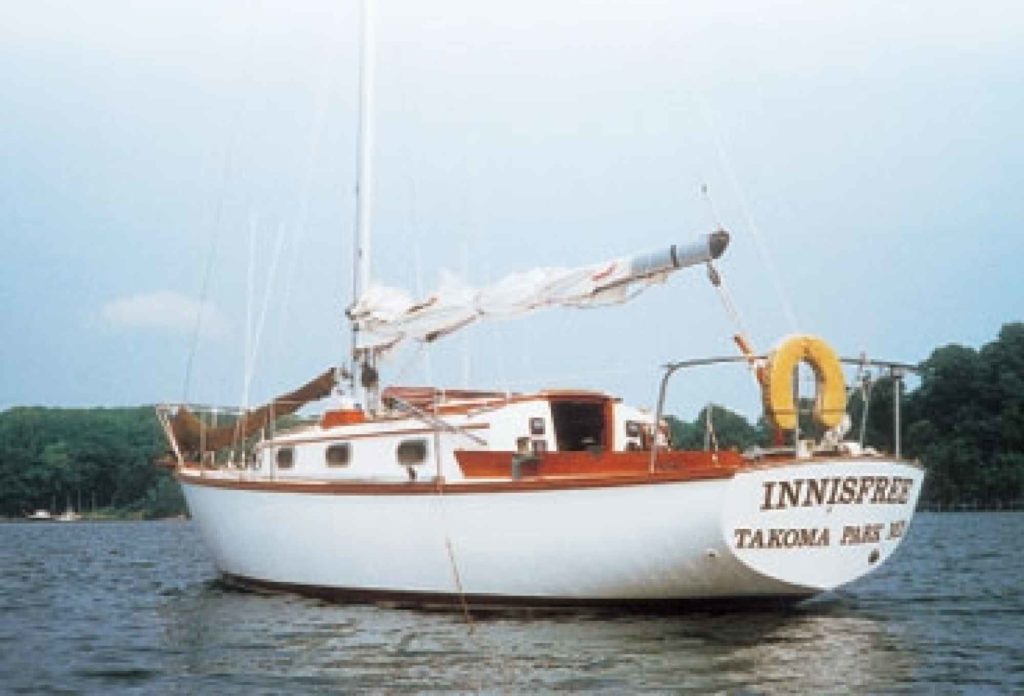
While the sleek lines and the teak accents of the Cape Dory 28 may grab the eye, it is the performance of the boat that make it unique. The Cape Dory comes with all amenities that you might need available, including a V-berth, 2 settees, and a head. Safe, sound and comfortable as a cruiser it is still capable of speed. Quick in light wind and sturdy and capable in heavy air, it is off the wind where the Cape Dory 28 shines with a balanced helm and the ability to cut through chop and still tack perfectly. Click here to read more about the Cape Dory 28.
Islander Bahama 28
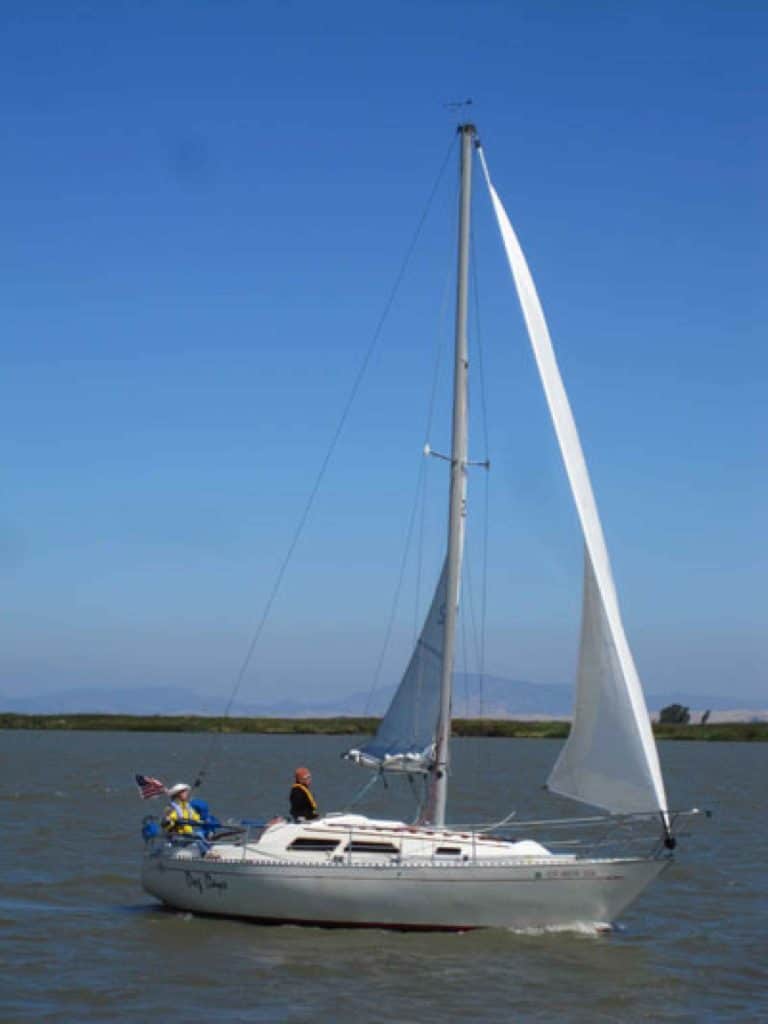
On top of being a real eye-catcher, the Islander Bahama 28, with its 5-foot-6-inch draft and 3,300 pounds of ballast, sails beautifully, tracks well, and responds quickly to the helm. Inspired by the International Offshore Rule, it is unusually wide, offering stability in breeze without sacrificing the sheer and lines that make it so attractive. Below deck, the Islander Bahama 28 comes standard with plenty of berths and storage space and a galley complete with stove, icebox and sink. Click here to read more about the Islander Bahama 28.
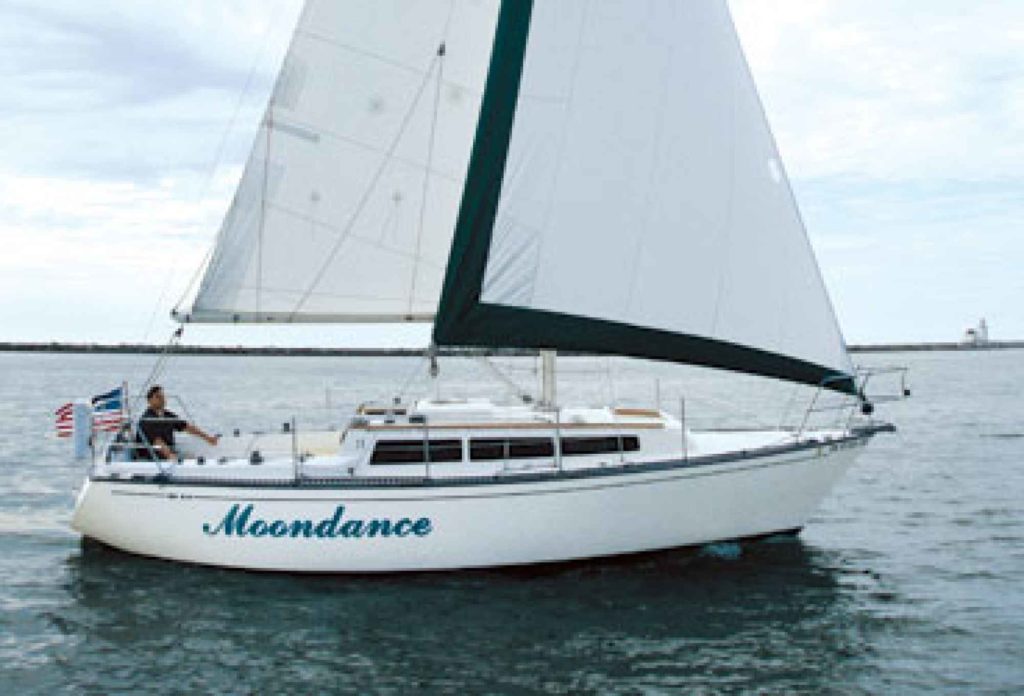
Much like its older sibling, the S2 8.6 still holds its contemporary style, despite its 1983 introduction. Like all other S2 Yachts, the 8.6 is recognized for the quality craftsmanship that allows the boat to hold up today.The S2 8.6 is a very comfortable and easily managed coastal cruiser and club racer. It’s relatively stiff, its helm feels balanced, and it tracks well. On most points of sail, it compares favorably with other boats of similar size and type. Click here to read more about the S2 8.6.
Contessa 26
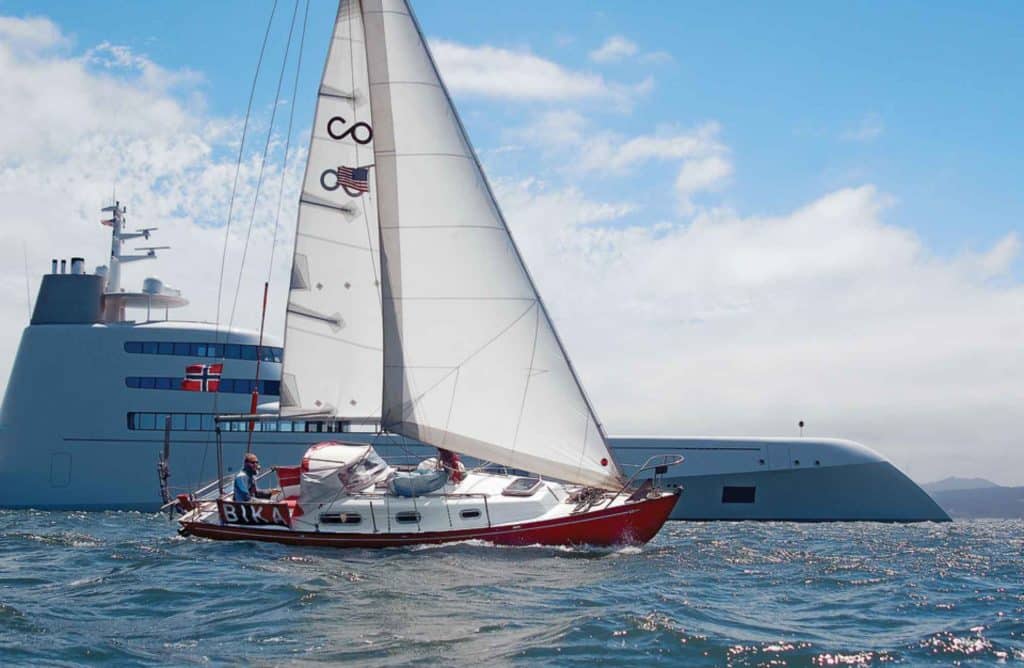
When the Contessa 26 was released in 1965, it immediately proved itself to be a strong, seaworthy vessel. The Contessa has continued to prove itself throughout its lifetime, being the boat of choice for two solo circumnavigations under the age of 21. While upwind performance leaves some wanting, the boat is sturdy and can carry full sail in up to 20 knots of breeze. Suited more for single-handing, the Contessa lacks standing headroom and the accommodations are sparse. Nonetheless, the Contessa 26 performs well as a daysailer with guests aboard. Click here to read more about the Contessa 26.
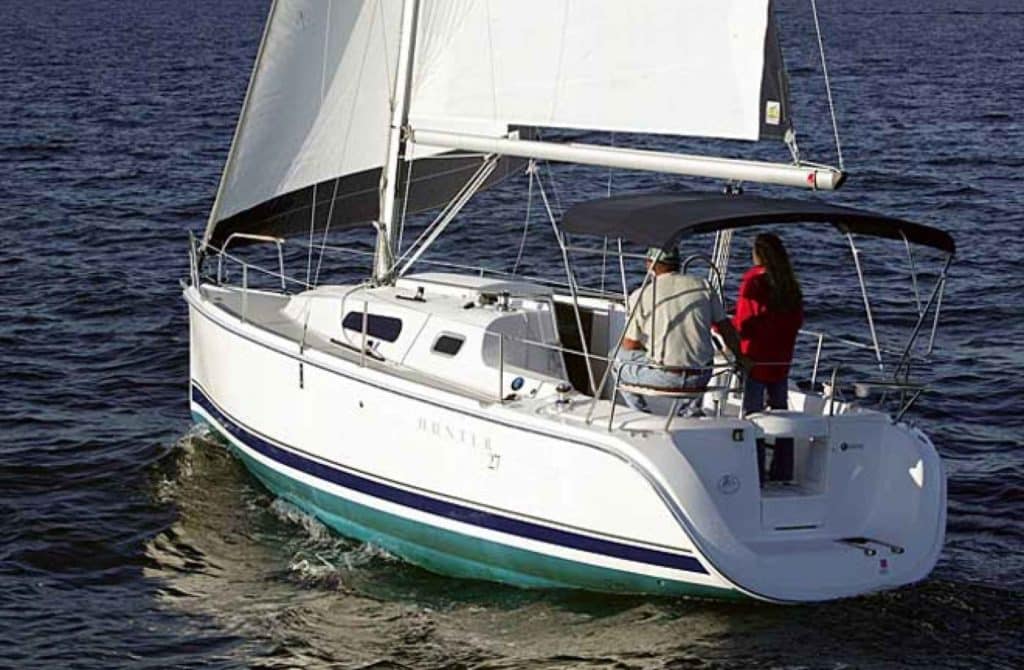
The Hunter 27 perfectly encompasses the pocket cruiser ideal. Even if you don’t want a big boat, you can still have big boat amenities. With the generously spacious layout, wheel steering and a walkthrough transom the Hunter feels much larger than 27 feet. Step below deck and any doubts you had that the Hunter was secretly a big boat will be gone. The amenities below are endless; a full galley including stove, microwave and cooler, head with full shower, several berths and not to mention a saloon with seating for 6. The Hunter 27 has reset the benchmark for 27-footers. Click here to read more about the Hunter 27.
- More: 21 - 30 ft , Boat Gallery , monohull , Sailboat Reviews , Sailboats , used boat guide
- More Sailboats
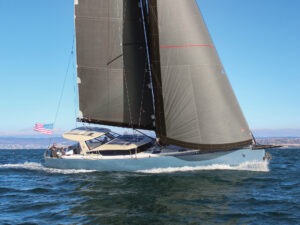
New to the Fleet: Pegasus Yachts 50

Balance 442 “Lasai” Set to Debut

Sailboat Review: Tartan 455

Meet the Bali 5.8

A Legendary Sail

10 Best Sailing Movies of All Time

Kirsten Neuschäfer Receives CCA Blue Water Medal
- Digital Edition
- Customer Service
- Privacy Policy
- Email Newsletters
- Cruising World
- Sailing World
- Salt Water Sportsman
- Sport Fishing
- Wakeboarding
- New Sailboats
- Sailboats 21-30ft
- Sailboats 31-35ft
- Sailboats 36-40ft
- Sailboats Over 40ft
- Sailboats Under 21feet
- used_sailboats
- Apps and Computer Programs
- Communications
- Fishfinders
- Handheld Electronics
- Plotters MFDS Rradar
- Wind, Speed & Depth Instruments
- Anchoring Mooring
- Running Rigging
- Sails Canvas
- Standing Rigging
- Diesel Engines
- Off Grid Energy
- Cleaning Waxing
- DIY Projects
- Repair, Tools & Materials
- Spare Parts
- Tools & Gadgets
- Cabin Comfort
- Ventilation
- Footwear Apparel
- Foul Weather Gear
- Mailport & PS Advisor
- Inside Practical Sailor Blog
- Activate My Web Access
- Reset Password
- Pay My Bill
- Customer Service

- Free Newsletter
- Give a Gift

How to Sell Your Boat

Cal 2-46: A Venerable Lapworth Design Brought Up to Date

Rhumb Lines: Show Highlights from Annapolis

Open Transom Pros and Cons

Leaping Into Lithium

The Importance of Sea State in Weather Planning

Do-it-yourself Electrical System Survey and Inspection

Install a Standalone Sounder Without Drilling

When Should We Retire Dyneema Stays and Running Rigging?

Rethinking MOB Prevention

Top-notch Wind Indicators

The Everlasting Multihull Trampoline

How Dangerous is Your Shore Power?

DIY survey of boat solar and wind turbine systems

What’s Involved in Setting Up a Lithium Battery System?

The Scraper-only Approach to Bottom Paint Removal

Can You Recoat Dyneema?

Gonytia Hot Knife Proves its Mettle

Where Winches Dare to Go

The Day Sailor’s First-Aid Kit

Choosing and Securing Seat Cushions

Cockpit Drains on Race Boats

Rhumb Lines: Livin’ the Wharf Rat Life

Re-sealing the Seams on Waterproof Fabrics

Safer Sailing: Add Leg Loops to Your Harness

Waxing and Polishing Your Boat

Reducing Engine Room Noise

Tricks and Tips to Forming Do-it-yourself Rigging Terminals

Marine Toilet Maintenance Tips

Learning to Live with Plastic Boat Bits
- Sailboat Reviews
Island Packet 27
The pint-sized progenitor of the ip line boasts devoted owners and solid resale value. it's a lot of cruising comfort in a small space..
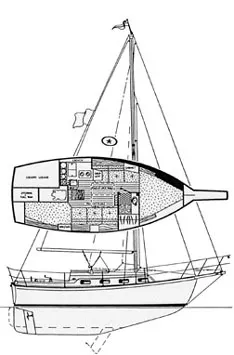
More than 20 years ago, backhoes and bulldozers hacked a factory plot out of the mangroves in Largo, FL and Island Packet Yachts was born. The company was started by Bob Johnson, an MIT graduate and naval architect who had worked on missiles for the Navy. In those days there were plenty of “rockets” being built: It was the heyday of the IOR-inspired racer/cruiser. But when Johnson left aerospace he had a different model in mind. Rather than putting bunks in a de-tuned race-winner or sails on a husky trawler, he and his infant company swam against the fin-keeled flow—they created a cruiser built on a modernized version of the traditional long keel.
That boat was stubby, full-transomed, roomy, shoal, and distinctively vanilla. And she was a hit. Suitable for taking across to the Bahamas, gunkholing the Gulf and Keys, and exploring the waterways, she was appreciated first by Floridians. Larger than expected, better-crafted than most small cruisers, and overbuilt in pleasing ways, she came to appeal to a wider world. Priced well above most auxiliaries her size, she nonetheless carved her own niche (29 boats sold in the first two years).
Her success put Island Packet on the map. Introduced in 1980 and originally known as the Island Packet 26, the boat went through a Mark II version before becoming, in 1984, the Island Packet 27. That evolution saw some ballast refinements and interior changes, but those normal tweakings were overshadowed by the fact that sailors in profitable numbers were coming to embrace Johnson’s vision.
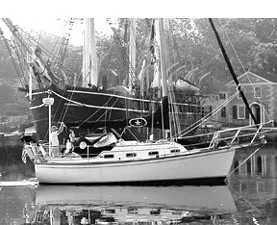
As of today, more than 2,000 sailboats have been built at the Largo plant. Current production models are the IP 350, 380, 420, 485, and the Packet Craft 360 powerboat.
Chunky, vanilla-milkshake, bow-spritted auxiliaries dot the anchorages of the world, and several have circumnavigated. IP has prospered while many of the companies (purveyors of fin-keels and full) that once dotted the waterfront have folded.
Johnson and his pioneering people built and sold 249 IP 27s before discontinuing the boat (in favor of the IP 29) in 1992. The chubby little boat with the big long keel started it all.
Today, with a price tag that reflects both the material put into her and the acceptance that she has won, she is not a bargain. Nonetheless, especially when you shop in terms of cubic space, price per pound, and durability, the Island Packet 27 is still an excellent place to look for used boat value.
Design Johnson has introduced a new boat virtually every year. He has developed and brought to market over a dozen new auxiliaries since starting with the IP 27, but the basic elements haven’t changed very much. He’s won five various “Boat of the Year” awards in the past five years, and those awards would seem to reflect his continuing ability to deliver on the promise of his earliest work, rather than celebrate anything radical in terms of a departure, at least in monohull sailboats.
Johnson’s philosophy as a boatbuilder, and the popularity of his boats, is based largely on his “Full Foil Keel®” concept, which incorporates both modern design techniques and modern marketing ideas.
The merits and demerits of full-length keels have been discussed in these pages before, as well as in other sailing magazines, but we can revisit the general argument here.
Long-keeled boats are made today by only a handful of builders, and Johnson is certainly foremost among them, in terms of boats built and sold. According to one argument, the reason there are fewer full-keeled boats being built today is that modern technology and materials have allowed us to build fin-keeled boats, which are swifter and more efficient—and long-keelers have simply become obsolete.
The long-keel crowd thereupon gets ornery and says, first of all, that relative efficiency depends very much on conditions, and that, in any case, efficiency alone isn’t the point.
The “fin” versus “long” argument may well be fruitless or endless, but if there are any cooler heads left at the end of it we’d hope they might agree: Keels are meant to 1. provide lift, 2. provide righting moment, and 3. offer as little drag as possible. Fin keels do sometimes loosen and fall off. They do lead to pounding and grounding and shallow bilges—but there isn’t much doubt that when it comes to doing all of the essential jobs that keels are meant to do on sailboats, fin keels are runaway victors in any comparison. You get more lift, less drag, and a more effective righting arm, pound for pound, when the keel runs down vertically rather than horizontally.
Cool heads must acknowledge that there are more performance parameters than those dealing only with efficiency. There’s the tendency of a long-keeled boat to be more comfortable in a seaway, and its ability to track straight, easing the helmsman’s burden. A full keel offers housing for a centerboard, which improves performance and achieves shallow draft. (The IP 27 draws just 2′ 8″ with her board up.) Encapsulated ballast doesn’t fall off or out, and a full-keeled boat can be careened on a distant beach for painting or repairs.Finally, there’s the strength of construction that yields a sense of solidity and safety often mentioned by IP owners.
Long keels were fading fast when Johnson introduced the IP 27. Few who gave Johnson’s little cruiser a look failed to come away impressed with her headroom, elbow room, stowage, and general liveability. Most who contemplated going to sea in a boat so small came easily to appreciate the 27’s robust construction, simple systems, efficient layout, and workable sailplan.
Many elements have been a part of Island Packet’s success, but hydrodynamics seem much less a factor to us than build quality, liveability, and detailing. One thing is sure: Johnson’s customers want his boats badly and are willing to pay top dollar for them.
Says IP Director of Sales and Marketing Bill Bolin, “Bob knows all about computers, but he prefers the duck weights and French curves and a blank sheet of paper. IPs aren’t cookie cutter designs, it’s just that the elements that we think make a good boat haven’t changed. Bob believes in U-shaped sections.”
U-shaped sections offer a good trade-off between payload and performance. Starting with the 27 and continuing with her big sisters, Johnson has drawn hull shapes that were spectacularly long on interior volume but somewhat short on hydrodynamic refinement. Deep U-shaped sections afford good payload but when you round out the turn of the bilges you give away form stabilty. Stability is important to cruisers, and Island Packets are stiff boats. For that Johnson relies on abundant ballast. By toting 3,000 pounds of lead around (after 250 pounds were added to the original boat) the 27 earns a quite-effective ballast/displacement of 38 per cent. In his larger boats, Johnson has made the percentage of ballast even greater (and lowered the center of gravity).
When you combine the additions in weight plus the reductions in horsepower (due to a relatively low-aspect rig that minimizes heeling moment), however, you begin to get an idea of the “costs” of stability in terms of liveliness under sail. If you follow the numbers you can see that her 16.7 sail area/displacement ratio signals sailing that’s less than sizzling, and that’s what the majority of her owners report, especially in light air. Take a three-bladed prop, a relatively blunt entry, and wetted surface enough to be very discouraging, and you have further reasons why Island Packet owners tend to reach for the ignition when the breeze gets wispy.
Accommodation Time and again, owners that we’ve talked to call their boats “the biggest little 27-footer ever.” There’s not much doubt that one of the things to like best about this pocket cruiser is that she expands the cruising envelope for boats of her type. The 27 was followed by the innovative 31, whose tri-cabin set-up made her seem miles bigger than her actual size. Though that approach (quarterberth aft to starboard, big saloon with fold-down table, big galley to port of the companionway, head and closets between the “rooms,” and a jumbo platform double forward) is there with the 27, she offers, in fact, nothing revolutionary. She just makes superlative use of the beam and the height afforded below.
One of the things that helped move Island Packet out of the mangroves and into the main stream was “big boat” joinery. The 27 stands out from other production boats of her era in terms of well-chosen woods, matched grains, mitred corners, pleasing trim.
Builders before Johnson most often made price the principal arbiter in their smaller boats. That’s another area where Island Packet broke away, and it is another key to the company’s success.
The IP 27, like her siblings, exhibits what we’d have to call a certain décor belowdecks. There’s definitely a “designing mind” at work here. One owner even said, “only a woman could have combined comfort, style, ventilation, and roominess with such flair.”
Not that the gender issue should become a sore point, but the upholstery, furniture, and decorative touches are powerful and distinctive. Because Island Packet provides few (originally no) options for upholstery, fabrics, and trim, that powerful and distinctive box is yours to live in. Island Packets all look much alike below. We’re not necessarily at odds with that look—we just wonder what we might do if we were.

There’s plenty of well-planned stowage space: positive catches on the lockers, drawers, and cubbies—shelves with high fiddles. The 27 goes well beyond the “throw-it-below” and “camping out” approaches that long characterized small cruisers. And the quarterberth makes a great sea berth. That is, in fact, what quarterberths are meant to be.
Some owners felt that 30 gallons of water wasn’t enough, and there were others who put in a bid for a larger holding tank. Some said the helm station was too small, but one reported, “We just had a party of 12 aboard for drinks. The people from the bigger boats always seem to come to us.” And there’s the Connecticut owner of a 1985 boat who reported “all the surprises that we’ve had have been pleasant ones.”
From our interviews we’ve found that the people who cruise Island Packet 27s have an extraordinarily high degree of satisfaction with the liveability and comfort provided by their boats.
Construction Step aboard this 27-footer and there’s no “bobbly” smallboat sensation. At 8,000 pounds she sits solid in the water. The Island Packet 27 displaces as much as 3,000 pounds more than rival auxiliaries of her size and averages about 1,500 pounds heavier than the boats available in her class in 1980. Her big-boat feel and heavyweight status come from the way she’s built. Her long keel may set her apart from the crowd, but rugged construction is another Island Packet hallmark, and it all started here.
The hull is solid, made from a layer of mat and layers of knitted cloth. The forward edge of the keel is built up to almost an inch of solid glass in order to withstand impact. Blistering seems not to have been a big problem with the IP 27s ; of the more than 30 owners we questioned, not one has encountered the pox. An IP 31 owner who was less fortunate, however, told us that grinding blisters away and re-coating the hull was “a relatively simple proposition due to the thickness and quality of the hull laminate.”
Island Packet hulls are reinforced with structural grids. Typical of Johnson’s fusion of the new and the tried-and-true, these precisely engineered structures are built of plywood floor timbers that run athwartships and are glassed to the hull. They are then covered with a fiberglass pan that forms the cabin sole. Used in racing boats, grids let you save weight. Used in high-volume production boats, they help streamline construction. Used at Packet’s “semi-custom” pace and built up in hulls that are hardly weight-sensitive, the grid, as Johnson interprets it, creates an unyielding backbone for the boat. We noted the absence of creaks and flexing, and the bulkheads are built on this solid foundation.
As rugged as the 27 was, she had some problems. Chief among them was cracking in the hull laminate when boats were point-loaded (as in on a jackstand or a reef). Crazing of the gelcoat on the deck was another annoyance with the first boats. The decks are cored (with a factory-developed material still in use after 22 years) and joined (via a solid lip) to an inward-turning flange atop the hull. The joint was bonded with 3M 5200 sealant and clinched with stainless bolts on 6-inch centers. No leaks have been reported to us.
Hardware is attached, as it should be, with aluminum backing plates, and those areas of the deck are solid to avoid crushing the core under load. This system has worked well over the decades, but several owners have reported that they needed to re-bed their chainplates to stop leaks.
Performance You might expect a boat that is heavy and carries a short rig to be at her worst in light air. The owners of the IP 27 have found that to be true. They gave her a composite rating of “poor” in light-air sailing.
On the other hand, with a long waterline, well-faired hull sections, and a shape with effective sail-carrying power, you might expect the Island Packet to reach well, and you’d be right. One of her larger sisters, an Island Packet 35, won a recent Marion-Bermuda Race by sailing fast with the wind on the beam. “We run away from larger boats,” report many owners. When the wind is free the IP 27 is rewarding. The (optional) cutter rig is at its best in these conditions. With the wind on the beam that additional sail area (via the staysail) can boost boatspeed between 10 and 20 percent.
Sailing upwind is not the 27’s strong suit. Wide sheeting angles are one problem. Lack of “bite” from a low-lift keel is another. Short-tacking the boat (even without the problems of feeding a large genoa through the small space between stays on the cutter rig) isn’t always easy. Upwind the staysail adds windage but hardly any drive. And it’s obviously in the way. “It’s sometimes tricky to get her to sail through a tack,” says one owner. Acceleration is slow, which compounds the lack of lift and inefficient steerage, and usually creates an overabundance of heeling moment. Factor in the relatively blunt entry of the beamy hull and you’re not going upwind fast.
A three-bladed prop and the standard Yanmar 2GMF20 offer a pretty good substitute. “We’re faster under power than Catalina 30s and 36s,” brags one IP skipper. Powering astern isn’t so easy, say several owners. Given her underwater configuration you can see why reversing the IP 27 is more of a challenge than backing down in split-underbody auxiliaries.
“It would have been a good idea to put an access panel in the quarterberth so I could get at the starboard side of the engine,” says a Texas sailor. “I would have appreciated a drain plug on the bottom of the oil pan,” says an owner from Maine.
“If I ever need to work on the fuel pump I’ll have to pull the engine,” adds a third from Chesapeake Bay.
Still, most IP owners have good things to say about their diesels.
Conclusions Like all used boats, the IP 27 offers experiences to learn from: “Don’t even bother with the c(l)utter rig and get the big (130-percent) genny, not the little (110) one.” “Upgrade the primary winches and make them self-tailing.”
Unlike some owner groups, the Island Packet family is virtually unanimous in praising the factory. Johnson, Bolin, and company they head receive high marks from virtually every angle. Owners repeatedly spoke to us of their hustle, intelligence, fairness, and expertise. The boat that they began with certainly struck a chord.
That resonance had something to do with updating the venerated long keel and making it “fly,” but we think integrity was the key to the success of the IP 27 (and the line that she started). We mean, first of all, the physical integrity of an overbuilt, robust, pounds-per-dollar value; also the “walking the walk” integrity of a boat that can actually cruise far afield at 27 feet, and finally the day-to-day integrity of a company working to make and keep those values real.
Also With This Article Click here to view “Used Boat Price History.” Click here to view “Owners’ Comments.”
RELATED ARTICLES MORE FROM AUTHOR
Can you beach an IP 27 or 26 with their swing keel like you can a southerly? I need a good shallow water cruiser that doesn’t cost a fortune.
Have you done a review of the Island Packet 29? I cant find a review, and there isn’t much mention on the net. I have an IP29. I would be happy to provide my opinion. Captain Harry
LEAVE A REPLY Cancel reply
Log in to leave a comment
Latest Videos

Bahamas Travel Advisory: Cause for Concern?

Island Packet 370: What You Should Know | Boat Review

How To Make Starlink Better On Your Boat | Interview

Catalina 380: What You Should Know | Boat Review
- Privacy Policy
- Do Not Sell My Personal Information
- Online Account Activation
- Privacy Manager

5 Best Liveaboard Bluewater Sailboats

Last Updated by
Daniel Wade
December 28, 2023
Liveaboard bluewater sailboats are both comfortable to live on and capable of making long, offshore ocean voyages.
The best liveaboard bluewater sailboats must strike a balance between comfort and seakeeping abilities. These boats are generally heavy and stable and roomy enough to spend time in. They must also include the necessary hardware to make cooking, sleeping, and bathing possible in choppy conditions.
Table of contents
Bluewater Liveaboard Sailboat Design
What makes a good bluewater liveaboard sailboat , and how is it different from a coastal cruiser? There are a few aspects of purpose-built bluewater sailboats that make them different from most production vessels. The first and (possibly) most important is the hull design.
The classic bluewater sailboat hull shape features a long, deep, full keel. The keel acts as a hydroplane and keeps the boat stable on course in all sea conditions. Deep keel sailboats aren't the only kind of bluewater-capable vessels, but they're a tried and tested design.
Other vessels gain stability from having a wide beam. Beamy sailboats are far more comfortable in rolling seas, as they tend to buffett and pitch much less than leaner, narrow boats. Most ideal liveaboard bluewater sailboats balance length and beam carefully to make the most of the space and hull shape.
Space is another important quality to consider when choosing the best bluewater liveaboard sailboat. Interior space comes first, as living quarters are a key element of comfort.
Cockpit space should also be considered, especially if more than one person comes aboard. Most liveaboard bluewater sailboats sacrifice cockpit space for cabin space.
A comfortable liveaboard sailboat should include several amenities, including a head (toilet), a shower, two sinks, a galley with a stove, an icebox, a place to eat, and a place to sleep. Ideally, the dining area is separate from the primary sleeping area.
A separate chart table is ideal as well because it keeps food and clutter away from important navigational equipment. A chart table is less important on liveaboard sailboats that spend the majority of their time docked. That said, the chart table functions well as a spot for a microwave, toaster oven, or TV when you're not underway.
A separate forward V-berth, known as a master cabin, is a big plus on liveaboard boats. Separating the sleeping area from the rest of the cabin can increase comfort and coziness.
However, on a bluewater sailboat, a side berth near the hatch is essential as well. This is because you may need to quickly take control of the vessel after waking up, and it's best to sleep close to the helm.
Power and Water
Power and water shouldn't be overlooked when choosing a bluewater liveaboard. Many liveaboards spend most of their time docked and hooked up to shore power, water, and sewage. But bluewater liveaboards are designed for cruising, which means everything must be self-contained.
The best bluewater sailboats have sufficient freshwater storage tanks for several weeks on the water. Some have desalination (water maker) machines, which require electricity to run.
Solar panels are an excellent option for power generation, and they can be installed on almost any sailboat.
But all bluewater sailboats should have battery banks and a gasoline or diesel generator built into the system. On many vessels, the inboard engine also functions as a generator.
Safety is an essential factor to consider when choosing a cruising sailboat , especially if it doubles as your primary residence. Basic safety equipment such as bilge pumps and radios should be maintained and tested regularly. Backups and spare parts should also be kept aboard.
Other safety features, such as watertight hatches, can keep your cabin safe and dry during inclement weather. Self-draining cockpits are helpful when sailing offshore, as spray and waves drain from the exposed cockpit without the use of electric or mechanical pumps. If the drain ports are kept clean, no bailing is ever necessary.
Radar is another useful safety feature that, while not mandatory, can keep you in-the-know and alert you to the presence of nearby ships. Radar is especially useful at night, as the automatic alarms can wake you whenever a potential obstacle appears nearby.
Bluewater Sailboats for Living Aboard and Cruising
Living aboard a sailboat is one of the most interesting and rewarding lifestyles available today. It's even more alluring when you can sail your vessel across oceans, which is what bluewater sailboats are designed to do.
A liveaboard cruising sailboat combines comfort, seakeeping ability, and ease of handling in a compact and thoughtfully-designed package. Here are the best liveaboard sailboats for bluewater cruising.
1. Pacific Seacraft Flicka 20
{{boat-info="/boats/pacific-seacraft-flicka-20"}}
The Flicka 20 is the smallest and most interesting sailboat on our list. At only 20 feet overall in length, the interior accommodations of this vessel are spartan at best and suitable for minimalist living.
What makes the Flicka 20 stand out is its exceptional bluewater performance. This sailboat is truly an ultracompact pocket cruiser. With a full ballast keel, self-draining cockpit, and wide beam, the Flicka 20 is more capable offshore than some boats almost twice its size.
This sailboat has the profile of a traditional keel cruiser. From a distance, it would be easy to mistake for a much larger vessel. Its hull shape, manageable Bermuda rig, and small size make it a perfect starter sailboat for single handed offshore cruising.
Inside, you have (almost) everything you need to live comfortably, albeit in a minimalist way. The cabin features standing headroom throughout, which is highly unusual for a 20-foot sailboat. On the port side, you're greeted with a small but functional galley. On the starboard side, there's a small head with a toilet and a shower.
The Flicka 20 displaces a hardy 5,500 lbs. Due to its large keel, there's no centerboard trunk to obstruct interior space. A V-berth upfront makes up the sleeping accommodations, and some models feature settees on both sides with a pop-up dining and chart table in between.
The Pacific Seacraft Flicka 20 has achieved somewhat of a cult status amongst bluewater sailboat enthusiasts. Only about 400 were built, so purchasing a Flicka 20 is somewhat of a rare and expensive proposition. That said, the benefits of owning a 20-foot bluewater liveaboard sailboat are hard to beat.
Cheap slip fees, low maintenance costs, and simplicity are the major selling points of this vessel. It's trailerable behind most heavy-duty pickup trucks and technically small enough to store on the street or in a driveway.
2. Pacific Seacraft Allegra 24
{{boat-info="/boats/pacific-seacraft-allegra-24"}}
If the Flicka 20 is too small for your taste, try the Pacific Seacraft Allegra 24. It follows the same design principles of the Flicka 20, but with four feet of additional space for cabin amenities and seaworthiness.
Four feet may not sound like a lot, but it makes a world of difference on a sailboat. The additional space on the Allegra 24 adds room to the head, extends the port and starboard settees, and increases the size of the galley.
If you like the idea of a small, semi-trailerable offshore sailboat with liveaboard amenities, you'll love the Allegra 24. This stout sailboat has almost miraculous handling and seakeeping qualities while retaining the benefits of small overall size.
With the Allegra 24, you'll be able to make virtually any offshore passage and save on slip fees, maintenance costs, and overall labor. This vessel is easy to sail single handed and large enough for a minimalistic couple to live, eat, and sleep comfortably.
The Pacific Seacraft Allegra 24 is not ideal for people who need space for pets, children, or guests, as the interior is quite small when compared to other sailboats. That said, there's enough room for an occasional passenger, and the cockpit is comfortable enough for four adults to sit and interact.
3. O'Day 28
{{boat-info="/boats/oday-28"}}
The O'Day 28 is a popular sailboat that makes a great liveaboard cruising platform. This affordable vessel was produced between 1978 and 1986, and over 500 examples were produced over the years.
All in all, the O'Day 28 is a stout cruising sailboat that's suitable for offshore and coastal sailing. It features a raked stern and hidden rudder, and a helm that's similar to what you'd find on much larger boats.
The O'Day has a large fuel tank for its inboard engine and an even larger 25-gallon freshwater capacity, which is excellent for offshore cruising. Additional tanks can be added in storage spaces, making the O'Day 28 suitable for long voyages.
The cabin of the O'Day 28 is spacious and includes everything you'd need to live aboard comfortably, along with plenty of storage space throughout. The wide beam of the O'Day 28 gives it lots of space, so the cabin doesn't feel cramped for its size.
Two models of the O'Day 28 were built; one featured a swing keel, and the other had a fixed swing keel. The swing keel model is ideal for coastal cruising and shallow-water sailing, while the fixed keel O'Day 28 is more suited for bluewater cruising.
That said, both keel variants make fine offshore sailboats. The cabin of the O'Day 28 features a large galley with a stove and icebox, two large settee berths, a large center table ahead, and a V-berth forward. The head serves as a separator to the forward cabin, giving the V-berth an extra layer of privacy.
4. William Atkin "Eric" 32
{{boat-info="/boats/atkin-co-eric-32"}}
"Eric," designed in the 1920s by famous marine architect William Atkin, is a radical departure from typical modern liveaboard sailboats. However, as a bluewater liveaboard sailboat, this vessel likely outshines all the others on this list in almost every conceivable way.
Eric is a 32-foot traditional wooden ketch. This planked full- keel sailboat displaces over 19,000 lbs and has a draft of about five feet. The basic design of the hull is based on early Norweigian fishing boats, which were known for their resilience in rough North Sea storms.
Eric is a traditional gaff-rigged vessel with two short masts and a long bowsprit. Though complex to rig, it sails beautifully in all weather conditions. One of the earliest examples built survived a hurricane offshore in the 1930s, and subsequent models have completed numerous long-range ocean voyages.
Eric is a purpose-built long-range ocean cruiser. Interior accommodations are spacious and designed for comfort and utility. Unlike most sailboats of the time, Eric features a full head with shower, a 'master cabin' style V-berth forward, a full galley with an icebox, and standing headroom throughout.
William Atkin's Eric is, by all definitions, an ocean-crossing sailboat designed to take between one and four adults just about as far as they want to go. It has all the qualities of an oceangoing sailboat in a compact package, along with excellent seakeeping characteristics.
The primary drawback of this 32-foot Atkin sailboat is maintenance. Most of these hulls were constructed using traditional oak planking, which lasts forever if taken care of but requires skilled maintenance. The planks are caulked using cotton wadding, and they'll need recaulking if the boat stays out of the water for too long and "dries up."
If you're looking for a beautiful and historic liveaboard sailboat with serious offshore cruising capabilities, consider an Atkin Eric 32. Although somewhat rare, examples of this design occasionally pop up for sale on the used market.
5. Pearson 35
{{boat-info="/boats/oday-28"}}, {{boat-info="/boats/pearson-35"}}
The Pearson 35 crosses the rubicon into the 'big boat' category, as it has everything you'd expect of a large oceangoing sailboat. The vessel also has a unique displacement keel with an additional swing keel at the base.
The Pearson 35 is a roomy sailboat with excellent seakeeping abilities and a large sail plan. It's a typical Bermuda-rigged sloop with a tall mast and the usual sheet and halyard arrangement. As a result, it's fun to sail and easy to handle. It's also a fast boat, making it ideal for longer voyages.
The swing keel certainly doesn't make the Pearson 35 a shoal-draft sailboat. It has a modified full keel which (with the swing keel retracted) draws 3 feet 9 inches. With the additional swing keel down, the draft of the Pearson 35 increases to over 7 feet.
The Pearson 35 is a heavy boat with good sea keeping abilities. It was introduced in 1968, and over 500 units were produced. That makes it one of the more popular sailboats in its class, and plenty of Pearson 35s are still sailing around the United States.
Down below in the cabin, the Pearson 35 is roomy and comfortable. It features a full galley, an enclosed head with a shower and sink, and several berthing areas, including a forward V-berth. Plenty of storage is available throughout the cabin, making the Pearson 35 an excellent choice for living aboard.
There's something empowering about piloting a 35-foot sailboat through rough weather. The size of the boat provides both safety and a sense of security, which can help you keep a clear head during stressful situations at sea. The vessel is beamy as well, making it less likely to heel aggressively and increasing roll comfort in dicey seas.
Overall, the Pearson 35 is an excellent choice for a liveaboard bluewater sailboat. It's a large boat in comparison to the others on this list, and it's known for easy handling and excellent windward performance. The Pearson 35 is a common sailboat that's widely available on the used market.
Related Articles
I've personally had thousands of questions about sailing and sailboats over the years. As I learn and experience sailing, and the community, I share the answers that work and make sense to me, here on Life of Sailing.
by this author
Best Sailboats
Most Recent

What Does "Sailing By The Lee" Mean?
October 3, 2023

The Best Sailing Schools And Programs: Reviews & Ratings
September 26, 2023
Important Legal Info
Lifeofsailing.com is a participant in the Amazon Services LLC Associates Program, an affiliate advertising program designed to provide a means for sites to earn advertising fees by advertising and linking to Amazon. This site also participates in other affiliate programs and is compensated for referring traffic and business to these companies.

Similar Posts

Affordable Sailboats You Can Build at Home
September 13, 2023

Best Small Sailboats With Standing Headroom

Best Bluewater Sailboats Under $50K
Popular posts.

Best Liveaboard Catamaran Sailboats

Can a Novice Sail Around the World?
Elizabeth O'Malley
June 15, 2022

4 Best Electric Outboard Motors

How Long Did It Take The Vikings To Sail To England?

10 Best Sailboat Brands (And Why)
December 20, 2023

7 Best Places To Liveaboard A Sailboat
Get the best sailing content.
Top Rated Posts
Lifeofsailing.com is a participant in the Amazon Services LLC Associates Program, an affiliate advertising program designed to provide a means for sites to earn advertising fees by advertising and linking to Amazon. This site also participates in other affiliate programs and is compensated for referring traffic and business to these companies. (866) 342-SAIL
© 2024 Life of Sailing Email: [email protected] Address: 11816 Inwood Rd #3024 Dallas, TX 75244 Disclaimer Privacy Policy
Great choice! Your favorites are temporarily saved for this session. Sign in to save them permanently, access them on any device, and receive relevant alerts.
- Sailboat Guide

- Collections
Blue Water Boats
This collection of capable blue water boats features time-tested sailboats with rich histories.
Bluewaterboats.org built an encyclopedia of offshore sailboats for the sailing community. It contains a thorough summary of the history, details of the design and construction, and sailing characteristics on 99 sailboats.

Alajuela 33

Alajuela 38

Albin Vega 27

Allied Seawind MK II Ketch

Aquarius 24 Pilot Cutter

Bayfield 36/40

Bristol 41.1

Bristol Channel Cutter

Cabo Rico 38

Cape Dory 25

Cape Dory 28

Cape Dory 36

Cape George 36

Catalina 27

Cavalier 32

Cavalier 36

Columbia 29

Contessa 26

Contessa 32

Pacific Seacraft Dana 24

Downeaster 32

Endeavour 42

Endeavour 43

Falmouth Cutter 22

Fast Passage 39

Pipedream 37

Gemini 105M

Hallberg-Rassy 31

Hans Christian 33
Hans christian 38 mkii.

Hans Christian 38 Traditional

Hans Christian 41 Traditional

Hudson Force 50

Island Packet 31

Gin Fizz 37

Kelly-Peterson 44

Lord Nelson 35

Morris 28 Linda
Nor'sea 27.

Pacific Seacraft 25

Pacific Seacraft 31

Pacific Seacraft 34

Pacific Seacraft 40

Pacific Seacraft Crealock 37

Pacific Seacraft Orion 27

Passport 40

Pearson 36 Cutter

Pearson Rhodes 41

Pearson Triton
Tom thumb 24.

Southern Cross 31

Southern Cross 35
Southern cross 39.

Spencer 35 MK I

Tartan 37 (S&S)

Tayana Vancouver 42

Valiant Esprit 37

Vancouver 27

Pretorien 35

Westsail 28

Westsail 32

Westsail 42

Embed this page on your own website by copying and pasting this code.

- About Sailboat Guide
©2024 Sea Time Tech, LLC
This site is protected by reCAPTCHA and the Google Privacy Policy and Terms of Service apply.
7 Legendary Solo Bluewater Sailboats Worth Considering
When setting out to explore the open seas solo, you'll have to choose the right bluewater sailboat from so very many available options. The perfect boat for sailing single-handed is one that's not only safe and seaworthy, but also easy to handle on your own. In this article, we've handpicked the top 7 legendary solo bluewater sailboats worth considering for their excellent track records.
The most legendary solo bluewater sailboats are the Contessa 32, Westsail 32, Hallberg-Rassy 42F, Pacific Seacraft 37, Island Packet 38, Tayana 42, and Amel 54. These boats have it all: from robust designs to a world-renowned reputation for performance and reliability. They are known for their seaworthiness, durability, and comfort.
We understand the importance of balancing comfort and performance when spending prolonged periods at sea. Each of these sailboats has been proven to provide a harmonious blend of these attributes. Let's get to know them more below.
- Solo bluewater sailboats are designed to be sailed by a single person, making them ideal for solo circumnavigation or long-distance cruising.
- You can get the Contessa 32 and Westsail 32 for as little as $30,000.
- The maintenance and repair costs of the seven boats range from $5,000 to $50,000 per year.
- Marina fees and insurance can range from $5,000 to $20,000 per year.
- Factor in upgrades and equipment costs that can reach up to $100,000.
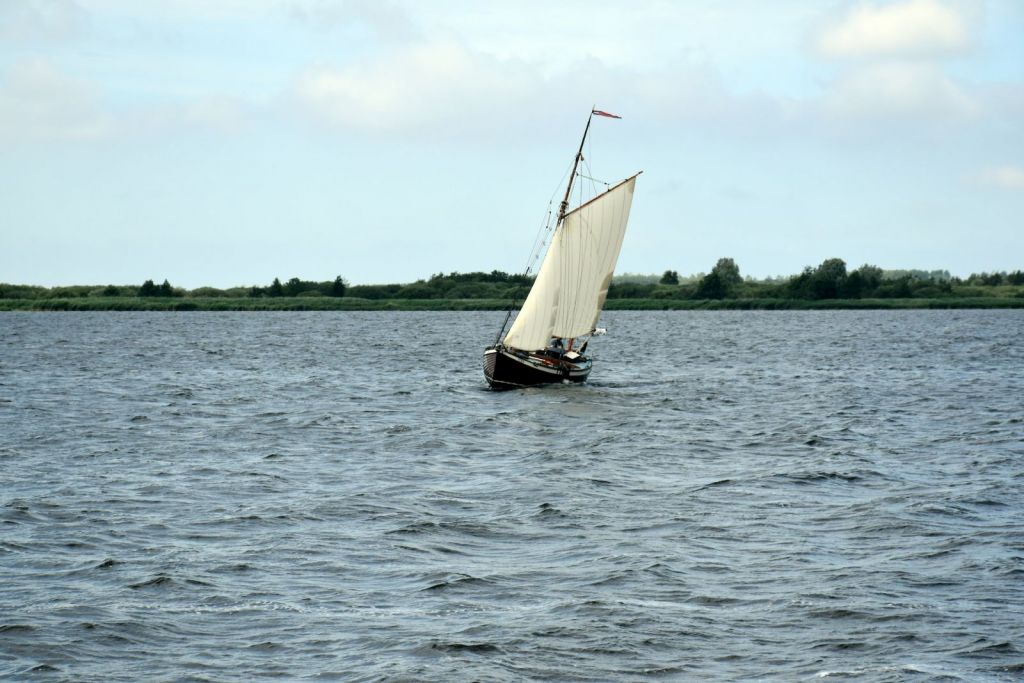
On this page:
The best solo bluewater sailboats, what makes a good solo bluewater sailboat, cost considerations when choosing a sailboat, maintaining your bluewater sailboat, contessa 32 is a classic, compact, and seaworthy sailboat.
Contessa 32's sturdy construction and excellent sailing performance have earned it a legendary reputation among sailors. With a well-designed interior layout, it has space for living aboard during your solo adventures. The Contessa 32 is a classic bluewater sailboat designed by David Sadler in the 1970s. It is known for its excellent balance, seaworthiness, and speed. It has a full keel, moderate displacement, and a classic design that has stood the test of time.
Westsail 32 is known for its rugged construction
The Westsail 32 gained fame as an affordable, rugged, and capable long-distance cruiser. Its full keel and sturdy hull ensure a comfortable ride in rough seas. The practical, function-driven interior makes it easy for solo sailors to maintain and navigate the vessel while providing essential amenities for an extended voyage.
Westsail 32 is another classic bluewater sailboat that was designed by William Crealock in the 1970s. It is known for its rugged construction, spacious interior, and excellent performance in heavy weather. The Westsail 32 has a full keel, heavy displacement, and a classic double-ender design.
Hallberg-Rassy 42F is known for its top-notch craftsmanship
The Hallberg-Rassy 42F is another superb choice for single-handed bluewater sailing. This Swedish-built yacht is well-renowned for its top-notch craftsmanship, stability, and comfort. It offers a spacious, well-lit interior, ensuring you'll enjoy your time below deck while cruising the open seas.
Hallberg-Rassy 42F is a modern bluewater sailboat designed by German Frers in the 1990s. It is known for its luxurious interior, excellent performance, and high-quality construction. The Hallberg-Rassy 42F has a fin keel, a spade rudder, and a modern design that combines comfort and performance.
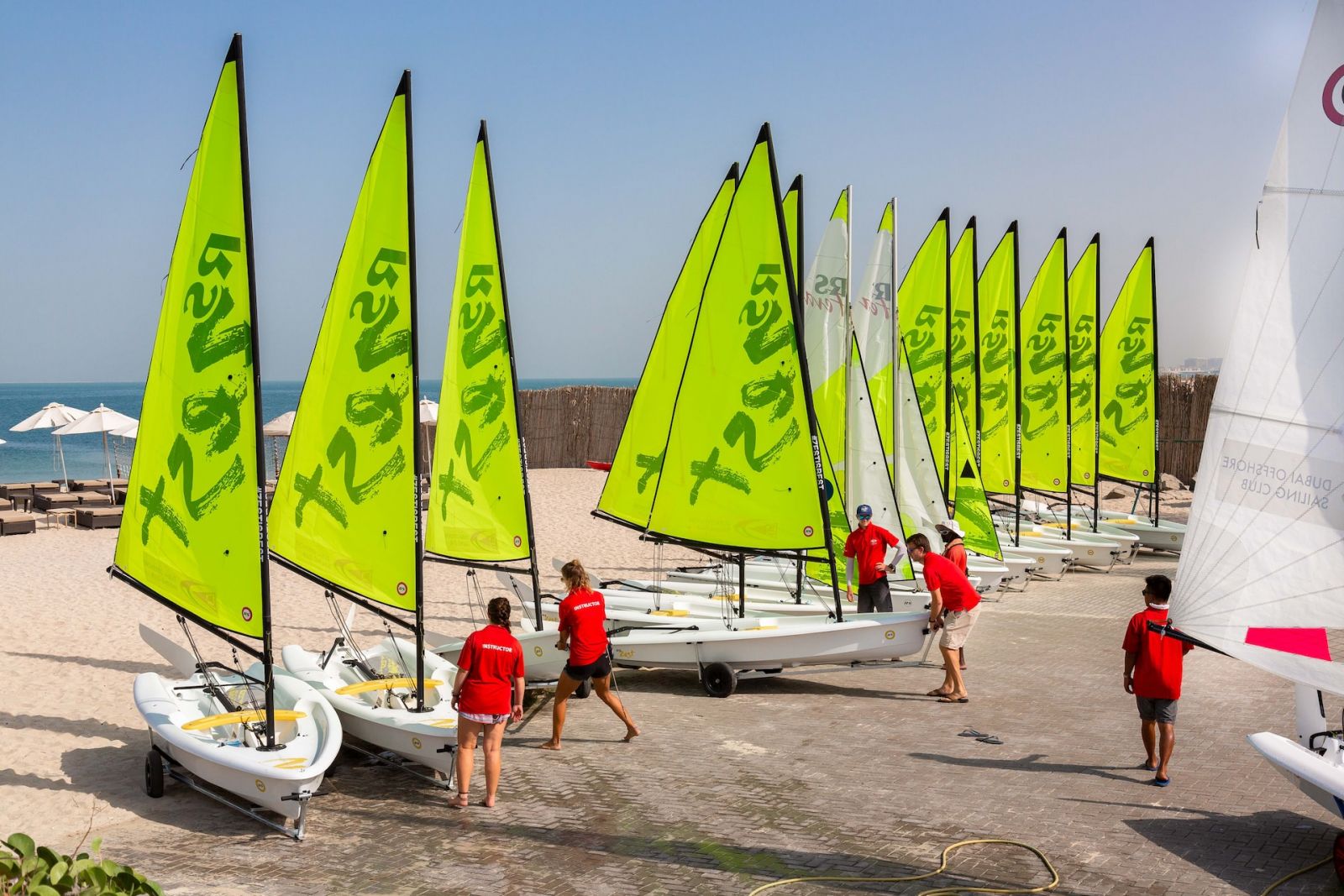
Pacific Seacraft 37 is designed for serious cruising
Pacific Seacraft 37 is a sturdy and reliable boat for solo sailors. Its moderate displacement and full keel provide excellent stability, while the well-thought-out interior layout includes abundant storage and comfortable living quarters. Its reputation as a proven bluewater cruiser makes it a top choice for solo sailors. The Pacific Seacraft 37 is another classic bluewater sailboat designed by Bill Crealock in the 1970s. It is known for its excellent balance, seaworthiness, and comfort.
Island Packet 38 is known for its spacious interior
Island Packet 38 is a popular choice among solo cruisers, thanks to its stable full keel design and living space. Its build quality, comfort, and performance make it well-suited for long-distance sailing. The spacious interior and practical layout ensure you have everything needed for a successful solo journey. Island Packet 38 is a modern bluewater sailboat designed by Bob Johnson in the 1990s. It 38 has a full keel, moderate displacement, and a modern design that combines comfort and performance.
Aside from bluewater sailing , there are other types of sailing discussed in this article.
Tayana 42 is known for its excellent balance, seaworthiness, and comfort
Tayana 42 is a comfortable, sea-kindly sailboat, ideal for single-handed offshore cruising. Its balanced performance, easy handling, and well-equipped interior ensure a safe and comfortable journey. It is well-regarded among sailors for its proven bluewater capabilities and timeless styling. The Tayana 42 is another classic bluewater sailboat designed by Bob Perry in the 1970s. It has a full keel, heavy displacement, and a classic design that has stood the test of time.
The Amel 54 is known for its luxury and exceptional build quality
This French-built vessel offers a spacious and comfortable interior with top-of-the-line amenities, making it an excellent option for solo sailors seeking a bluewater cruiser to explore the world in style and comfort. Its easy-to-handle design with advanced sailing systems allows you to sail solo with confidence and ease. The system includes electric winches, furling sails, and a self-tacking jib, which make it easy to handle the boat in all conditions.
To learn more about bluewater sailing , here's our comprehensive article on it.
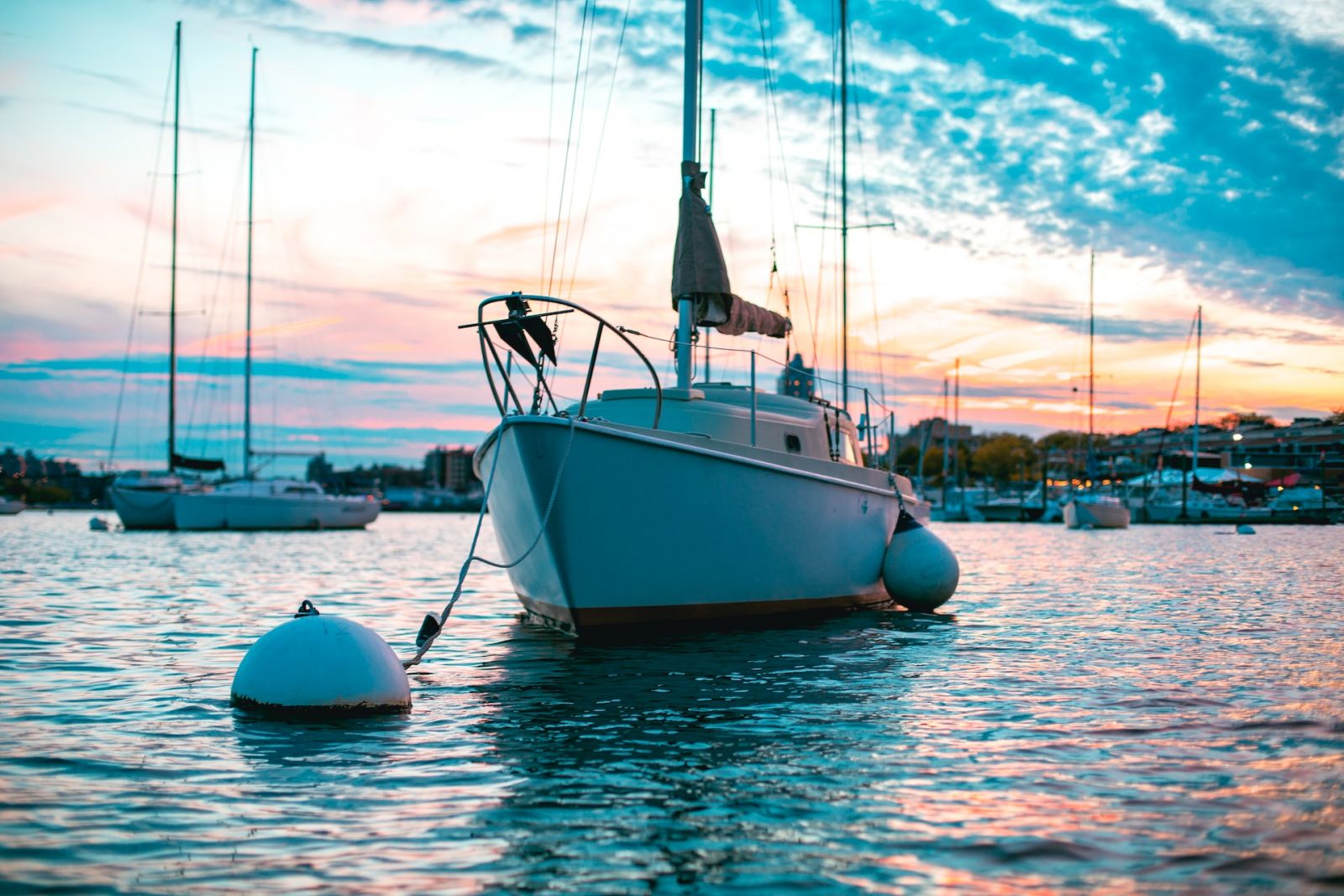
These factors will ensure not only your safety but also your comfort and ease during your sailing adventure.
Size and stability of a solo sailboat
A boat with a wide beam and short waterline provides more stability, making it easier for you to handle the vessel on your own. Some popular sailboat models known for their size and stability include the Westsail 32 and the Hunter Channel 31.
A good solo bluewater sailboat should be large enough to provide adequate storage space for supplies and equipment, while also being stable enough to handle rough seas and high winds. It should also have a well-designed hull shape that provides good stability and balance, and a keel that provides good tracking and prevents the boat from capsizing.
Ease of use and maneuverability of any solo sailboat
Features like roller furling and an electric windlass can make handling the sails and anchor much more straightforward. Also, hydraulic bow/stern thrusters with remotes can help you maneuver your boat easily and safely. Make sure to look for these features when choosing your bluewater sailboat.
A good solo bluewater sailboat should be easy to handle and operate by a single person. It should have a sail plan that is easy to adjust and control, and a steering system that is responsive and easy to use. It should also have a well-designed cockpit that provides good visibility and protection from the elements.
Durability and seaworthiness for long-term safety
A well-built sailboat with a history of proven offshore performance should be at the top of your list. Some of the best and most famous bluewater sailboats include the Alberg 30 and Hanse 371.
A good solo bluewater sailboat should be built to withstand the rigors of extended ocean voyages. It should have a strong, well-built hull that is capable of withstanding heavy seas and high winds. It should also have a well-designed rigging system that is strong and durable, and a keel that is designed to provide good stability and balance.
To learn more about the best keel design for bluewater sailing , here's our article on it.
Comfort and livability of a solo sailboat
Consider the layout and features of the boat, ensuring that it has a comfortable sleeping area, a well-equipped galley, and ample storage space. A good example is the Valiant 40, known for its excellent layout and seaworthiness.
A good solo bluewater sailboat should be comfortable and livable for extended periods of time. It should have a well-designed interior that provides adequate storage space, comfortable sleeping quarters, and a functional galley and head. It should also have good ventilation and lighting, and be well-insulated to provide protection from the elements.
Affordability and availability determine the sailboat's practicality
Set a budget and research suitable sailboats within that price range. Some budget-friendly options include the J/109 and Westsail 32. A good solo bluewater sailboat should be reasonably priced and readily available. It should be affordable for most sailors who are interested in long-distance cruising, and should be available for purchase or charter in most parts of the world.
If you're looking for bluewater sailboats under 40 feet , here's our article where we picked the top 13 most famous ones.
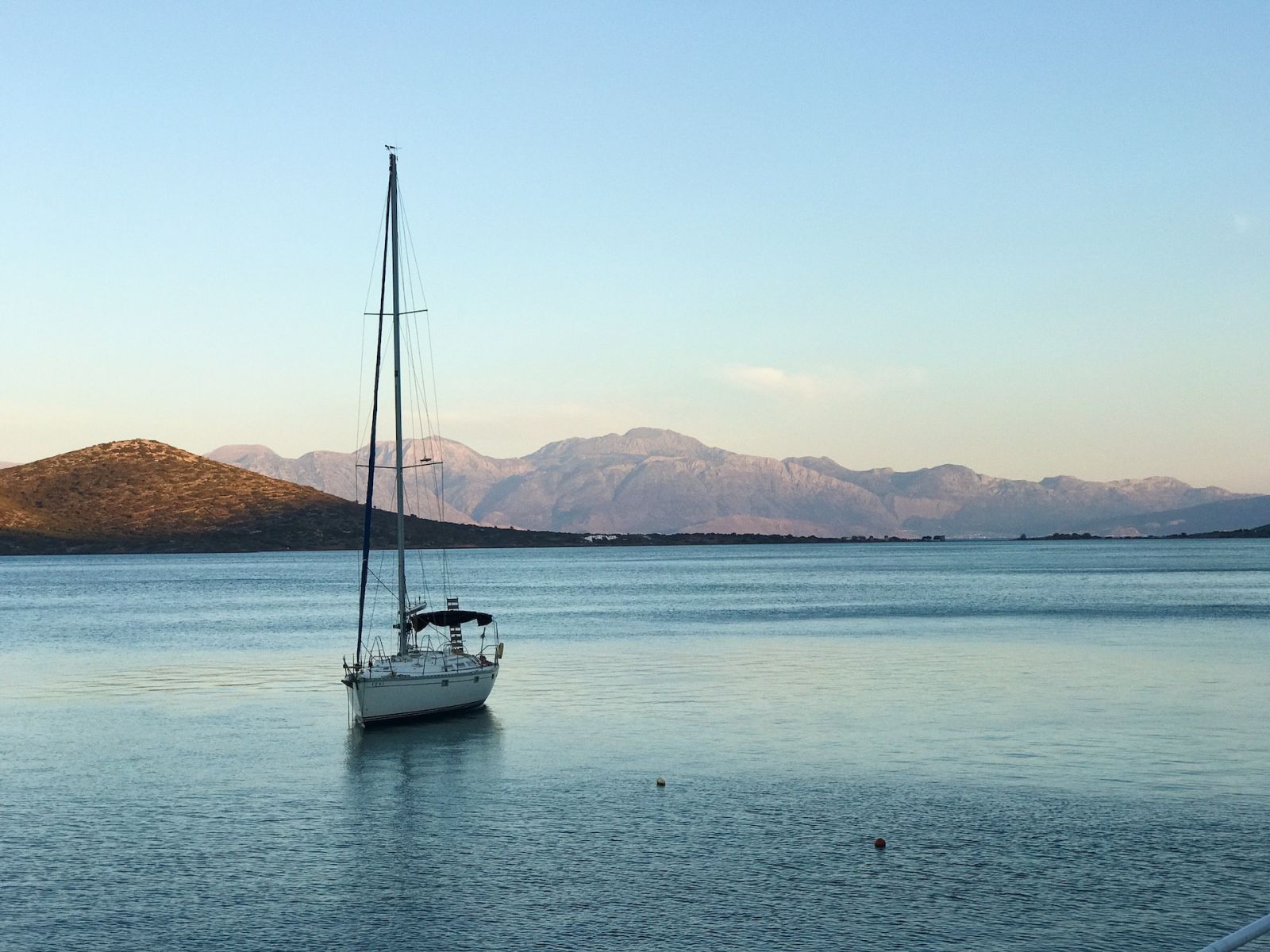
You'll be faced with a range of solo bluewater sailboat options, from budget-friendly to luxury models. Let's explore some factors you should keep in mind to make the best decision for your needs and budget.
Initial purchase price : This is often the first thing people think of when it comes to the cost of a sailboat. There's a wide range in prices, depending on factors like age, size, and brand. For example, a used Alberg 30 might cost between $10,000 and $15,000, while a new Amel 54 could be in the range of hundreds of thousands of dollars. It's important to find a balance between quality and affordability that suits your needs and financial capabilities.
Maintenance and repairs : Owning a sailboat comes with ongoing expenses to keep it in good sailing condition. Regular maintenance tasks like painting, replacing worn rigging, and inspecting safety equipment can add up over time. Be prepared to allocate a portion of your budget for these essential tasks, as neglecting them could lead to more expensive repairs down the line.
Marina fees and insurance : Depending on where you plan to keep your boat, you may incur costs for marina or dockage fees. Additionally, securing insurance coverage for your sailboat is a must to protect your investment. Both of these costs can vary widely, so make sure you factor them into your overall budget.
Upgrades and equipment : To ensure your sailboat is well-suited for solo bluewater sailing, you might need to invest in upgrades to improve its safety and performance. For instance, you may want to add a roller furling system, wind vane, or more advanced navigation equipment. These enhancements can amount to a significant investment, so it's wise to plan financially for any desired upgrades.
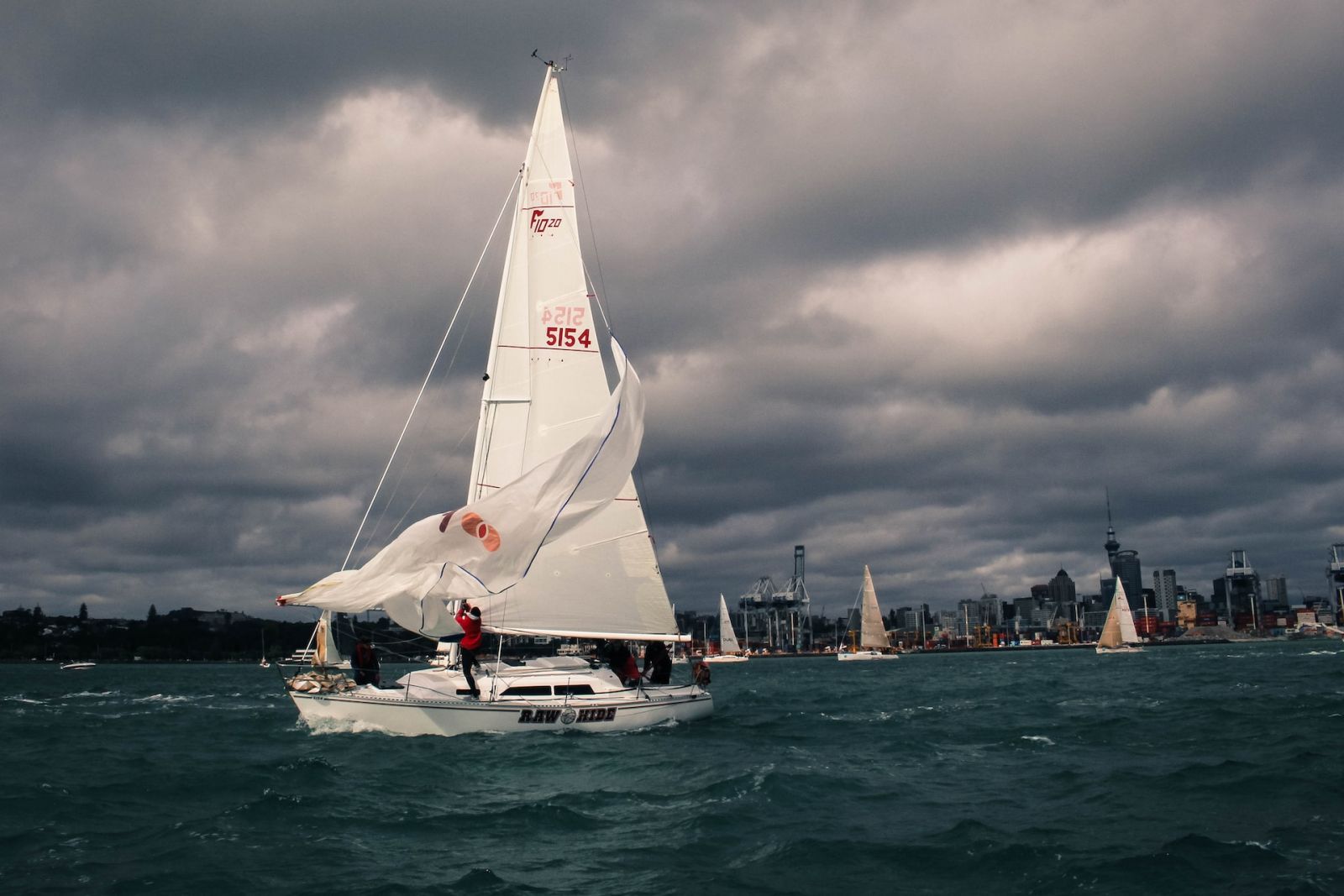
Here are some essential tips to keep your boat in top shape, and ensure its long life and performance during solo journeys:
Regular inspections : Make it a habit to perform a thorough inspection of your sailboat periodically. Examine the rigging, sails, hull, and all mechanical components. Routine inspections allow you to detect any signs of wear, damage or potential problems before they escalate.
Cleaning : Keep your sailboat clean by washing it regularly with freshwater and appropriate cleaning solutions. This simple practice prevents the buildup of dirt, salt, and other debris, which can cause corrosion and damage to your vessel over time.
Checking the bilge : Ensure that your bilge pump is working efficiently and that there's no water accumulating in the bilge area. If there are any signs of water accumulation, investigate the source and address any leaks or issues promptly.
Servicing the winches : Winches play a crucial role in your sailboat’s performance, so it’s essential to inspect, clean, and grease them regularly. This practice will guarantee their smooth operation and prolong their lifespan.
Sail care : Inspect your sails frequently for any tears, wear, or damage. Repair or replace them as necessary. To protect your sails from the sun’s harmful UV rays, always use a sail cover when not in use.
Keeping records : Maintain a logbook to document all maintenance tasks, inspections, and repairs. Not only will this help you keep track of what has been done, but it will also provide valuable information if you decide to sell your sailboat in the future.
Leave a comment
You may also like, what is bluewater sailing.
It's easy to confuse offshore sailing with bluewater sailing - and it's no wonder. Many people do, including myself. So I've decided to list the difference once and …
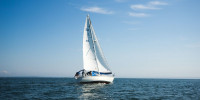
13 World-Famous Bluewater Sailboats Under 40 Feet

What's the Best Keel Design for Bluewater Sailing?

Different Types of Sailing and Racing Explained

41 Sailboat Cruising Essentials for Long Trips
Own your first boat within a year on any budget.
A sailboat doesn't have to be expensive if you know what you're doing. If you want to learn how to make your sailing dream reality within a year, leave your email and I'll send you free updates . I don't like spam - I will only send helpful content.
Ready to Own Your First Boat?
Just tell us the best email address to send your tips to:

- Career Opportunity
- New Dealer App.
- Carolina Skiff
- Aggressor Boats
- Warranty Inquiry
- News & Events
- Merchandise
- Find a Dealer

- Specifications
- Features & Options
- The best just got better.
- Length Over All: 27 'ft 3 "in
- Beam: 116 "in
- Gunnel Height: "in

- Length Over All: 30 'ft 3 "in
- Gunnel Height: 6183 "in

- Length Over All: 35 'ft 8 "in
- Beam: 128 "in

- Length Over All: 20 'ft 0 "in
- Beam: 101 "in

- Length Over All: 21 'ft 5 "in

- Length Over All: 23 'ft 9 "in

- Length Over All: 20 'ft 7 "in
- Beam: 103 "in
- Gunnel Height: 21 "in

- Length Over All: 22 'ft 9 "in

- Length Over All: 25 'ft 11 "in
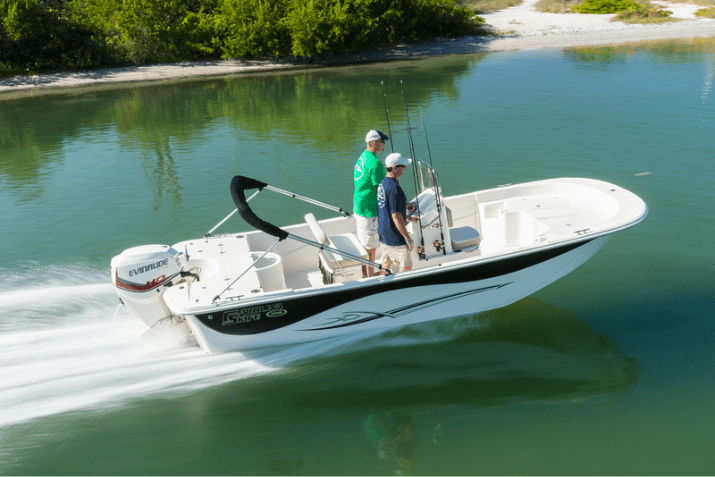
- Lorem ipsum dolormet
HFC BLUEWATER SERIES CENTER CONSOLE
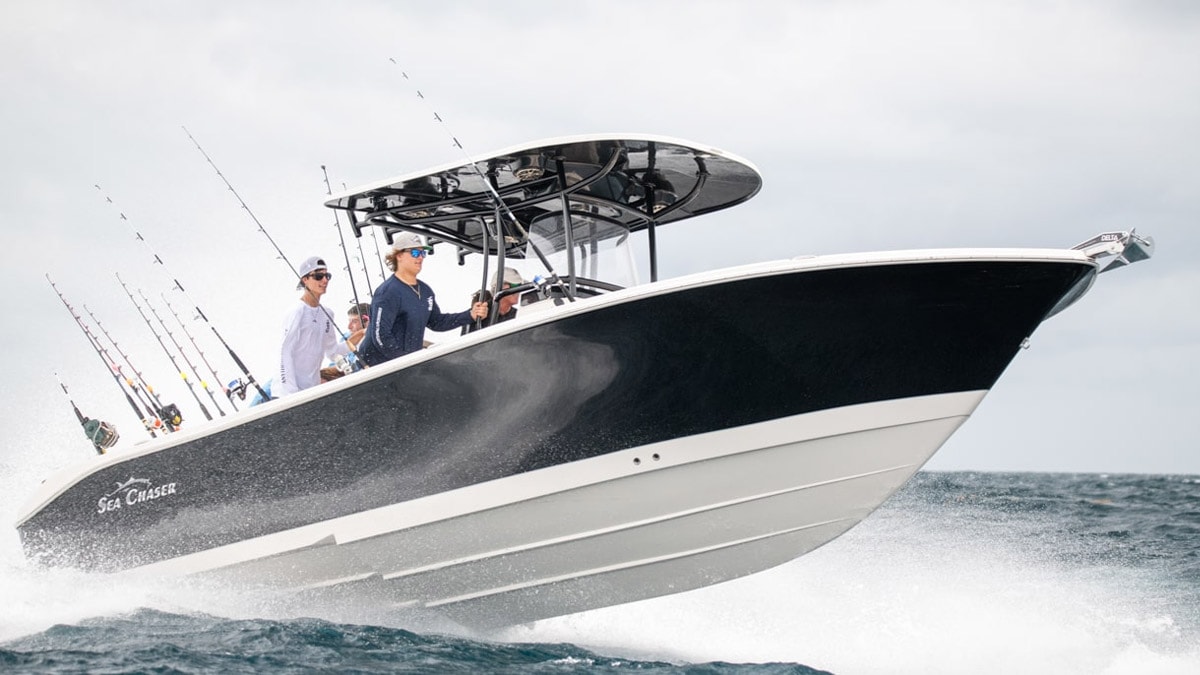
- Specs & Features
- Choose Your Color
- Build Your Boat
- Request A Digital Catalog
- Length Over All: 27 FT 3 IN
- Beam: 116 IN
- Gunnel Height: IN
- Boat Weight: 5438 LBS
- Fuel Capacity: 189 GAL
- Transom Size: 25 IN
- Draft (approx): IN
- Maximum Weight: Lbs
- Maximum Person:
- Maximum HP: 600 HP
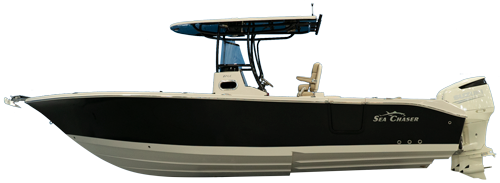
Get offshore in the new 2024 model year 27 HFC Bluewater Series – a multi-functional boat built for family, fishing and fun. Throughout the 27 HFC, find only the highest-quality components and materials, such as stainless steel fold-down cleats and flush-mounted rod holders, comfortable and attractive diamond-pleated upholstery and a 12" Simrad NSS EVO 3 with a sonar transducer and digital switching. At the stern, helm and bow, find plenty of seating for the whole family or fishing team. Included inside the console is a fully electric, flushable head – an ideal amenity for families and charter captains. Find a dealer near you today to see the new 2024 model year 27 HFC Bluewater Series.
- 100 % Fiberglass/Composite Construction (No Wood to Rot)
- Molded Fiberglass Deck Liner
- High Density Fiber Core Foam Transom
- Fiberglass Grid System
- Quick Lift High Performance Step Hull
- Rigid Rub Rail with Stainless Insert
- (6) Stainless Fold Down Cleats
- Premium Gelcoat
- Port & Starboard Coaming Pads/ Under gunnel Rod Storage
- (16) Flush Mounted Stainless Rod Holders
- Blue/White Courtesy LED Lighting Package
- Diamond Pleated Upholstery
- In Floor Bow Fish Box/ approx. 208 quart w/ Macerator Pump
- Stainless Bow Eye
- (2) Stainless Stern Eyes
- Rub Rail Mounted LED Bow Navigation Lights
- Portside Entry Door
- Bright Kromex Sea Chaser Logos
- Bright Kromex Model Numbers
- Cockpit Gravity Fed Overboard Drain
- High Speed Pickup
- Binnacle Control Shifter
- Teleflex Shifter Control Cable
- Stainless Power Grip Steering Wheel / Tilt Helm
- Digital Gauge, Switch Panel with 12V power
- Flush Mount LED Lighted Compass
- Power Assist Hydraulic Steering
- Wiring Harness
- 12" Simrad NSS EVO 3 w/Sonar Transducer, Digital Switching
- Molded French Vanilla Fiberglass T-Top w/ Matching Color Accent
- AM/FM BT Radio w/ 8 spkrs/USB/AUX Plugs
- Bi-Fold Side Entry Door
- Footrest/ Glove Box/ Utility Pocket
- Electric Flushable Head
- (2) Stainless Cup Holders
- Marine Horn with Stainless Cover
- Leaning post w/ approx. 40 gal. Well & Max Air / tackle trays
- Adjustable Helm Seating
- Fold Up Passenger Seat
- Fire Extinguisher
- (2) HFC Series Decals
- Anchor Locker w/ Windlass Anchor System
- Stainless Anchor Chock w/roller
- Stainless Low-Profile Bow Rail
- U-Shaped Bow Seating
- Removable Bow Cushions
- Port & Starboard Bow Cabinets w/storage
- 400 Quart Insulated Storage Compartment
- Removable Bow Table
- (2) 1100 GPH Bilge Pumps
- (2) 800 GPH Aerator Pumps
- Fuel/Water Separator
- Approx. 30 Gallon Rear Bait Well with LED Light & Max Air
- (2) Fold up Bench Seats
- Rear Battery and Bilge Access w/Electric Lifting Lid
- Rear Storage with LED Light
- Rear Starboard Side Cabinet with Tacke Storage/Knife Holders
- Splash Well Bilge Access with LED Light
- Stainless Telescopic Boarding Ladder
- Stainless Electric Trim Tabs
- Blue LED Underwater Lights
- Raw Water Washdown System w/Retractable Hose Reel
- Fresh Water Washdown/ Pull up Shower Wand
- Fresh Water Sink
- Battery Switch Panel
Make it your own
HULL COLOR OPTIONS
FULL SIDE OR COMPLETE HULL ON THE FOLLOWING COLORS:
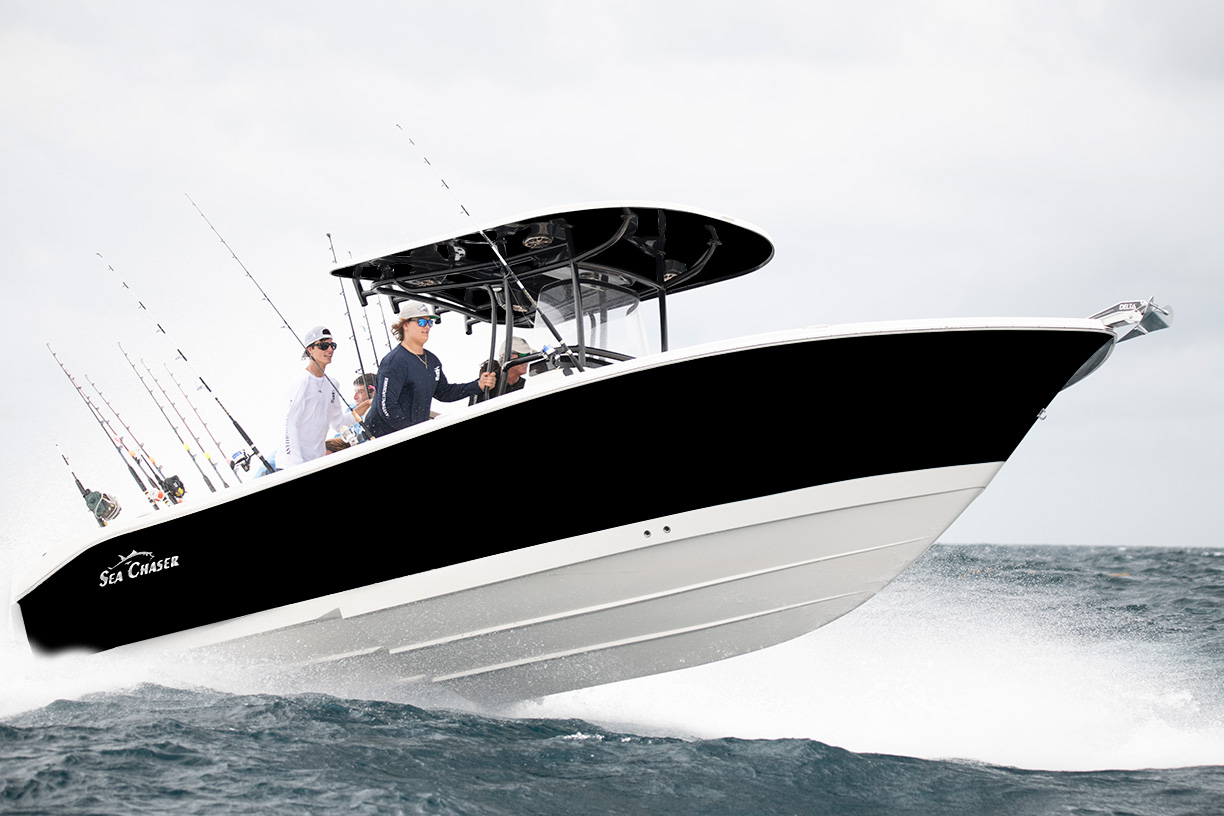
NOTE: The (NAP) Price does not include Dealer freight, Dealer prep, trailer, aftermarket accessories, options, registration fees, taxes and any other required fees in your purchasing state. Please see your local dealer for a full breakdown of pricing and availability. Price, materials, colors, options and specifications are subject to change without notice.
DECK LAYOUT
(hover over deck to open compartments).
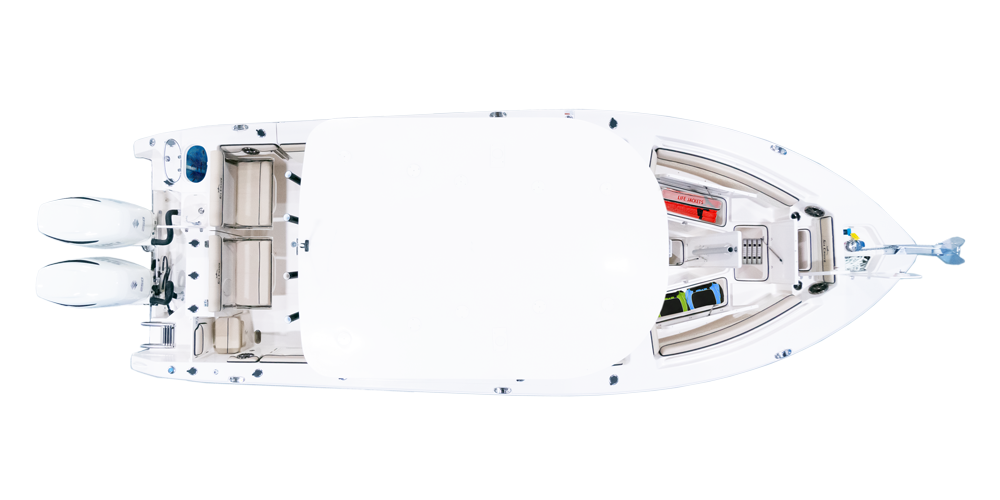
- Dual 12” Simrad NSS EVO 3/ ss60 Sonar
- 16” Simrad NSS EVO 3/ ss60 Sonar Simrad with transducer and digital switching system.
- Premium Sound Package
- Electronic Steering w/ Optimus 360 EPS Joystick
T Top Upgrade Option
- Grand Slam 390 Outriggers /18’ Telescopic
YOUR BOAT FEATURES
Customizations.
- Request a Quote
27 HFC Gallery

You’re one step closer to getting your dream boat. Please fill in the remaining information to request a quote with the boat features you selected! One of our representatives will reach out to you within 24 hours!
- Brand: Sea Chaser
- Model: 27 HFC
- First Name*
- Country* Select... United States Afghanistan Albania Algeria American Samoa Andorra Angola Antarctica Antigua and Barbuda Argentina Armenia Australia Austria Azerbaijan Bahamas Bahrain Bangladesh Barbados Belarus Belgium Belize Benin Bhutan Bolivia Bonaire Bosnia and Herzegovina Botswana Brazil Brunei Bulgaria Burkina Faso Burundi Cambodia Cameroon Canada Cape Verde Central African Republic Chad Chile China Christmas Island Cocos (Keeling) Islands Colombia Comoros Congo Cook Islands Costa Rica Cote d'Ivoire Croatia Cyprus Czech Republic Democratic Republic of the Congo Denmark Djibouti Dominica Dominican Republic Ecuador Egypt El Salvador Equatorial Guinea Eritrea Estonia Ethiopia Fiji Finland France French Polynesia French Southern and Antarctic Lands Gabon Georgia Germany Ghana Greece Grenada Guam Guatemala Guinea Guinea-Bissau Guyana Haiti Heard Island and McDonald Islands Honduras Hungary Iceland India Indonesia Iraq Ireland Israel Italy Jamaica Japan Jordan Kazakhstan Kenya Kiribati Kuwait Kyrgyzstan Laos Latvia Lebanon Lesotho Liberia Libya Liechtenstein Lithuania Luxembourg Macedonia (FYROM) Madagascar Malawi Malaysia Maldives Mali Malta Marshall Islands Mauritania Mauritius Mexico Micronesia Moldova Monaco Mongolia Montenegro Morocco Mozambique Namibia Nauru Nepal Netherlands New Caledonia New Zealand Nicaragua Niger Nigeria Niue Norfolk Island Northern Mariana Islands Norway Oman Pakistan Palau Panama Papua New Guinea Paraguay Peru Philippines Pitcairn Islands Poland Portugal Qatar Romania Russia Rwanda Saint Helena Saint Kitts and Nevis Saint Lucia Saint Martin Saint Pierre and Miquelon Saint Vincent and the Grenadines Samoa San Marino Sao Tome and Principe Saudi Arabia Senegal Serbia Seychelles Sierra Leone Singapore Slovakia Slovenia Solomon Islands Somalia South Africa South Georgia and the South Sandwich Islands South Korea Spain Sri Lanka Suriname Swaziland Sweden Switzerland Tajikistan Tanzania Thailand The Bahamas The Gambia Timor-Leste Togo Tokelau Tonga Trinidad and Tobago Tunisia Turkey Turkmenistan Tuvalu Uganda Ukraine United Arab Emirates United Kingdom United States United States Minor Outlying Islands Uruguay Uzbekistan Vanuatu Vatican City Venezuela Vietnam Wallis and Futuna Yemen Zambia Zimbabwe
- State/Province* Not Applicable Select... Alabama Alaska Arizona Arkansas California Colorado Connecticut Delaware Florida Georgia Hawaii Idaho Illinois Indiana Iowa Kansas Kentucky Louisiana Maine Maryland Massachusetts Michigan Minnesota Mississippi Missouri Montana Nebraska Nevada New Hampshire New Jersey New Mexico New York North Carolina North Dakota Ohio Oklahoma Oregon Pennsylvania Rhode Island South Carolina South Dakota Tennessee Texas Utah Vermont Virginia Washington West Virginia Wisconsin Wyoming
- ZIP/Postal Code*
Boat Request
Please send me a quote for a Sea Chaser , 27 HFC with the following features:
FOLLOW US ON INSTAGRAM
Sign up for sea chaser’s newsletter to receive regular updates from our team.
* denotes required fields

- New dealer application
- Request a Digital Catalog
- Dealer Login

Email First Name Last Name


- Compare Sailboats
- Sailboat Calculators
- Bluewater Sailboats
- Catamarans and Multihulls
- Sailing Liveaboard
- Sailboats Galley
- How Much it Costs
- Sailing Destinations
- Meteorology Terms
- Sailing and Nautical Terms
- Parts of a Sailboat
- Great Explorers
- People of the Seas
Bluewater Sailboat – Bristol 27
The Bristol 27 can be regarded as being as well-proven as a bluewater yacht can be 45 years after its initial debut. Although the boat was primarily designed for coastal sailing, well-prepared yachts are easily capable of working offshore.
In the middle of the 1960s, after selling Pearson Yachts, brothers Clint and Everett Pearson founded Bristol Yachts. The Bristol 27 was the first vessel to leave the docks, and some have compared it favourably to their earlier successful Pearson Triton 28. The Bristol 27 debuted in 1966 and experienced strong sales, especially in its first two years (more than 170). 337 units are thought to have been constructed before production stopped in 1978.

- LOA: 27′ 2″
- LWL: 19′ 9″
- Beam: 8′ 0″
- Draft: 4′ 0″
- Displacement: 6,600 lbs.
- Ballast: 2,575 lbs. (encapsulated lead)
- Sail Area: 340 sq. ft.
- Headroom: 5′ 10″
- Fuel: 22 US Gal.
- Water: 20 US. Gal.
- Engine: Atomic 4 petrol / Westerbeck 10hp diesel / 15hp outboard
- Designer: Carl Alberg
- Builder: Bristol Yachts
- Year Introduced: 1965
- Year Ended:1978
The Carl Alberg-created design exhibits the contemporaneous influence of Scandinavian Folkboats. These Bluewater Sailboats had beautiful low-slung sheer lines, lengthy overhangs, and sweeping full keels with forefoot cutaways. Although the narrow beam improves seaworthiness, it does nothing to improve form stability, making them initially rather delicate. Though they were made to stretch their waterline when heeled, so it’s not all bad.
The masthead sloop rig, which initially had roller-reefing in the mainsail boom, was carried by sailboats. Nowadays, the majority have returned to using basic slab reefed mainsails, which maintain their shape better and do not jam.
There were three different types of Bristol 27s: a day sailing model with a big cockpit and a small interior, a regular model with a bigger cabin and twin settees, and a dinette model with a sofa in place of a table. An inboard engine that could be either a petrol or diesel outboard engine installed inside a cockpit well. Any offshore task is best performed with inboard engines, particularly diesel ones.
The cabin of the Bristol 27 is small by contemporary standards because boats of this era were not built with interior room in mind. Even the cruising model with the larger cabin loses space in the cabin because of the relatively large cockpit. One of the design’s practical choices was to raise a part of the cabin house to provide 5′ 10″ or more of standing space in the main cabin while the hatch is opened and below the companionway! The settees and V-berths both fit someone 6′ 4″ tall.
The Bluewater Sailboat Bristol 27, one of the earliest fiberglass boats, was no different from the other Bristol boats in terms of strength. They had solid GRP hulls with molded-in decks, cabins, and cockpits that were fastened to the hull with deck clamps and bolts. Although the mast was deck stepped in this instance, it was held up by a massive bulkhead that is solidly tabbed into the hull. Ballast made of lead that was enclosed in fiberglass was employed.
Performance
The Bristol is nimble and simple to sail while underway, with a modest weather helm. In terms of performance, they are average. Although their design makes them naturally a little delicate, they do tighten up after 15-20 degrees of heel and have good overall stability. In order to aid, owners have been known to add an additional 300 lbs. of ballast to the bilges.
Overall, the boat’s design is conventionally seaworthy, and these designs are excellent for heaving to or laying ahull in rough seas.
Quick Notes
Although they were solidly built, some of the boats are already well past their prime.
The hull-to-deck joint has developed leaks, which is not unusual given its age, and this may occasionally be a challenging issue to rectify effectively. Surface-level, non-structural gelcoat cracks, and crazes are also age-related. Consider purchasing a model with an inboard engine.
Looking for a used sailboat for sale? Check out the Bluewater sailboat data and specs to make an informed decision. Ocean Wave Sail has data for over 10000+ boats that can help you select one to meet your sailing needs.
Now you can also precisely calculate the expenses related to boat ownership to make smart choices based on your budget and sailing needs. Use this bluewater Sailboat Calculator to explore different options and make the best decision.
Subscribe to our newsletter
Don’t miss new updates on your email.
© OceanWave Sail. All Rights Reserved 2022
Terms & Conditions – Privacy Policy – Cookie Policy
About Us – Privacy Policy
- New account
Forgot your password?
Lost your password? Please enter your email address. You will receive mail with link to set new password.
Back to login
Privacy Overview

IMAGES
VIDEO
COMMENTS
This modest 27-foot sailboat has an excellent reputation as one of the best bluewater boats. Sailor Matt Rutherford was the first to circumnavigate the Americas solo on one of these little beauties. I've also personally met Denis Gorman, a Jester Challenger who took his Vega, Lizzie-G, the wrong way across the North Atlantic twice.
The best bluewater sailboats under 24 feet are the Pacific Seacraft Dana 24, Norseboat 21.5, Catalina 22 Sport, Pacific Seacraft Flicka 20, and West Wight Potter 19. These sailboats have ample space for a couple and even a moderately-sized family along with all the amenities you may need. A roomy cabin, galley, and settees are necessary to go ...
The 10 best bluewater boats. 1. Westsail 32. Photo credit: SailboatData.com. The Westsail 32 is one of the most iconic bluewater cruisers and 19 have set out to cross the Pacific in the PPJ rally since 2009. In 1973, this small cruising sailboat garnered a 4-page spread in Time magazine.
Vancouver 28. Photo credit: YachtFathom.co.uk. A sensible small boat with a "go-anywhere" attitude, this pocket cruiser was designed with ocean sailors in mind. One of the best cruising sailboats under 40 feet, the Vancouver 28 is great sailing in a small package. Hull Type:Full keel with transom hung rudder.
The modest-appearing Bluewater Sailboat Albin Vega 27 is more complex than it first appears. This diminutive 27-foot fiberglass cruiser from Scandinavia has earned a devoted following across several continents and can flaunt her skills as a serious offshore cruiser. Per Brohall, a Swedish designer developed the Viggen 23 in 1964 in response to ...
The Westsail 32 is one of the most iconic bluewater cruisers. Built by the Westsail Corporation in the 1970s, this plucky, small sailboat has developed a cult following over the decades. Since 2009, 19 have set out to cross the Pacific in the PPJ rallies. The Westsail 32 is known for its sturdy construction, seaworthiness, and classic looks.
The legendary bluewater sailboats under 50 feet include Rustler 36, Tartan 37, Hallberg-Rassy 42F, Baba 30, Island Packet 38, Pacific Seacraft 37, Valiant 40, Najad 370, Moody 42, Halberg-Rassy 39, Sweden Yachts 45, Boreal 47, Amel Super Maramu, Outbound 44, Hylas 49, Malo 46, and Garcia Exploration 45. These legendary sailboats have earned ...
The Bluewater Sailboat Catalina 27 has been a fan favorite since its introduction in 1971, and its financial success has resulted in one of the longest and greatest production runs of its era, spanning 22 years and 6,600 boats. ... There was also a version with a taller, more efficient, high aspect ratio rig that added 24 sq.ft. of canvas that ...
Arcona 435. The Performance Cruiser winner at the 2019 European Yacht of the Year awards, the Arcona 435 is all about the sailing experience. She has genuine potential as a cruiser-racer, but her ...
The Vancouver 27, a "go anywhere" pocket cruiser built by Canadian Robert Harris in 1972, is the first in the Vancouver Yacht series. This strong 27-foot cutter was specifically designed for couples who wanted to explore the oceans of the earth. The first boat, which was specifically constructed for this purpose, successfully completed a ...
Balboa 26. Balboa 26 Courtesy Of Matts G. Djos. First splashed in 1969, the Balboa 26 continues to enjoy a strong following among budget-minded cruisers. Built sturdy and heavy, all of the boat's stress points are reinforced. The spacious cockpit comfortably seats 4 and is self bailing, ensuring that sailors stay dry.
The Nor'Sea 27 is a heavily-rigged sloop with moderate displacement, a shoal draft of 3" 10' and the 8ft beam which allows trailering without a permit. On the early boats ballast packages of standard (2500 lbs) and heavy (3000 lbs) were offered but since 1980 all boats have 3100 lbs of encapsulated lead ballast.
Tartan 3700. The Tartan 3700 is a design that has stood the test of time, and is still being built new today more than a decade since its launch. Although Tartan's have been around since the 1970s, Tartan's current designer, Tim Jackett, brought some unique features to the latest mix. The 12' 7" beam is carried well aft, providing good ...
For 27 to 28 footer you will need a trailer good for about 7500 pounds of sailboat, maybe a little more. The trailer and some boating items will be about 1700 pounds, so the truck should be up to towing 9200 pounds or maybe more. This requires at least a 3/4 ton with a larger engine.
Construction. Step aboard this 27-footer and there's no "bobbly" smallboat sensation. At 8,000 pounds she sits solid in the water. The Island Packet 27 displaces as much as 3,000 pounds more than rival auxiliaries of her size and averages about 1,500 pounds heavier than the boats available in her class in 1980.
Here are the best liveaboard sailboats for bluewater cruising. 1. Pacific Seacraft Flicka 20. cdmech. The Flicka 20 is the smallest and most interesting sailboat on our list. At only 20 feet overall in length, the interior accommodations of this vessel are spartan at best and suitable for minimalist living.
This collection of capable blue water boats features time-tested sailboats with rich histories. ... 1990 Catalina 27 Tall Rig $16,000 USD. St. Marys, GA, US 1987 Tayana Vancouver 42 $109,407 USD. Marathon, FL, US 1981 Hardin Voyager $12,500 ...
The most legendary solo bluewater sailboats are the Contessa 32, Westsail 32, Hallberg-Rassy 42F, Pacific Seacraft 37, Island Packet 38, Tayana 42, and Amel 54. These boats have it all: from robust designs to a world-renowned reputation for performance and reliability. They are known for their seaworthiness, durability, and comfort.
30 to 40 indicates a moderate bluewater cruising boat; 40 to 50 indicates a heavy bluewater boat; over 50 indicates an extremely heavy bluewater boat. Comfort ratio = D ÷ (.65 x (.7 LWL + .3 LOA) x Beam^1.33), where displacement is expressed in pounds, and length is expressed in feet. Capsize Screening Formula (CSF): Designed to determine if a ...
Maximum HP: 600 HP. Get offshore in the new 2024 model year 27 HFC Bluewater Series - a multi-functional boat built for family, fishing and fun. Throughout the 27 HFC, find only the highest-quality components and materials, such as stainless steel fold-down cleats and flush-mounted rod holders, comfortable and attractive diamond-pleated ...
27.16 ft / 8.28 m: LWL: ... Designed to determine if a boat has blue water capability. The CSF compares beam with displacement since excess beam contributes to capsize and heavy displacement reduces capsize vulnerability. The boat is better suited for ocean passages (vs coastal cruising) if the result of the calculation is 2.0 or less. ...
The Bristol 27 can be regarded as being as well-proven as a bluewater yacht can be 45 years after its initial debut. Although the boat was primarily designed for coastal sailing, well-prepared yachts are easily capable of working offshore. In the middle of the 1960s, after selling Pearson Yachts, brothers Clint and Everett Pearson founded ...
The ERICSON 27 was one of this builders most popular models with more than 1200 built. ... over 50 indicates an extremely heavy bluewater boat. Comfort ratio = D ÷ (.65 x (.7 LWL + .3 LOA) x Beam^1.33), where displacement is expressed in pounds, and length is expressed in feet. ... CSF = Beam/Disp (cubic ft)^.333. The displacement in cubic ...